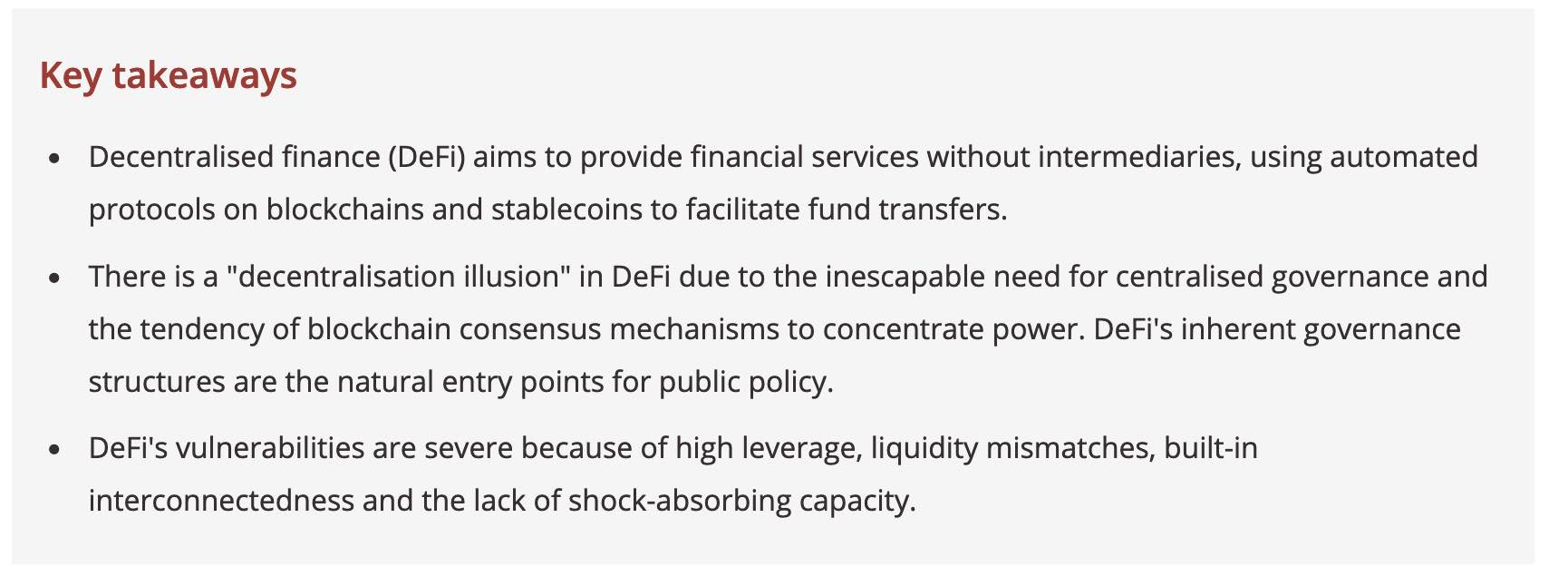Quick Links: The Internet of Money | Trust and Territory | If NFT's are the answer... What's the question? | American Dreams | Of Doppler Trails and RelationBlips | American Dream 3.0 | Meta Malls | The Golden Rule | Passion without reason | The spoils of war | What is a MetaCryptoVerse? | Scarcity in abundance | A house of cards | The game of your life | Igniting the imagination | Filling in the gaps | Less the BlockChain. More a Value Chain
Part 1: This changes everything
It's the Summer of 2021. Change is in the air. To quote one popular VC
"In Web 2.0 we talked about "Users" and "Viewers" being "Acquired"
In Web 3.0 we will talk about "owners" and "members" who "Join" and "Participate"
Words matter and we're seeing an ecosystem and language get built around purposeful action in a very cool way"
The we have this deep take...
This is why (Web 3.0/Metaverse) it's a game changer:
The Audience is no longer passive
The audience becomes an active community
Prediction: Hollywood shifts from being "top down" to "bottom up"
Communities will be more powerful than many studios
But - putting aside the observation Facebook and the other social media platforms have been putting the audience to work for years - is this change? Or are we just entering another cycle of Silicon Valley repackaging the past and offering it up as bright shiny and new?
I would argue it is much easier to understand where we are heading if we know where we have been.
So let's do a quick recap on the history of the web before we move forward
Web 0.1 Alpha

The fastest ever technology revolution has taken 50 years to gestate. It actually began in the late 1960's. Email was the killer app. Arguably it still is

Web 0.5 Beta
By the 1980's it had taken on something of a familiar form
The leading providers of this dial up experience were Compuserve, Prodigy and AOL
The killer app was the messaging boards. Online chat. But there were games, software downloads, shopping and online newspapers
Pretty much the online experience we have today but limited by the computing power and bandwidth of the day
The UI/UX was initially command line and evolved into a collection of Windows applications
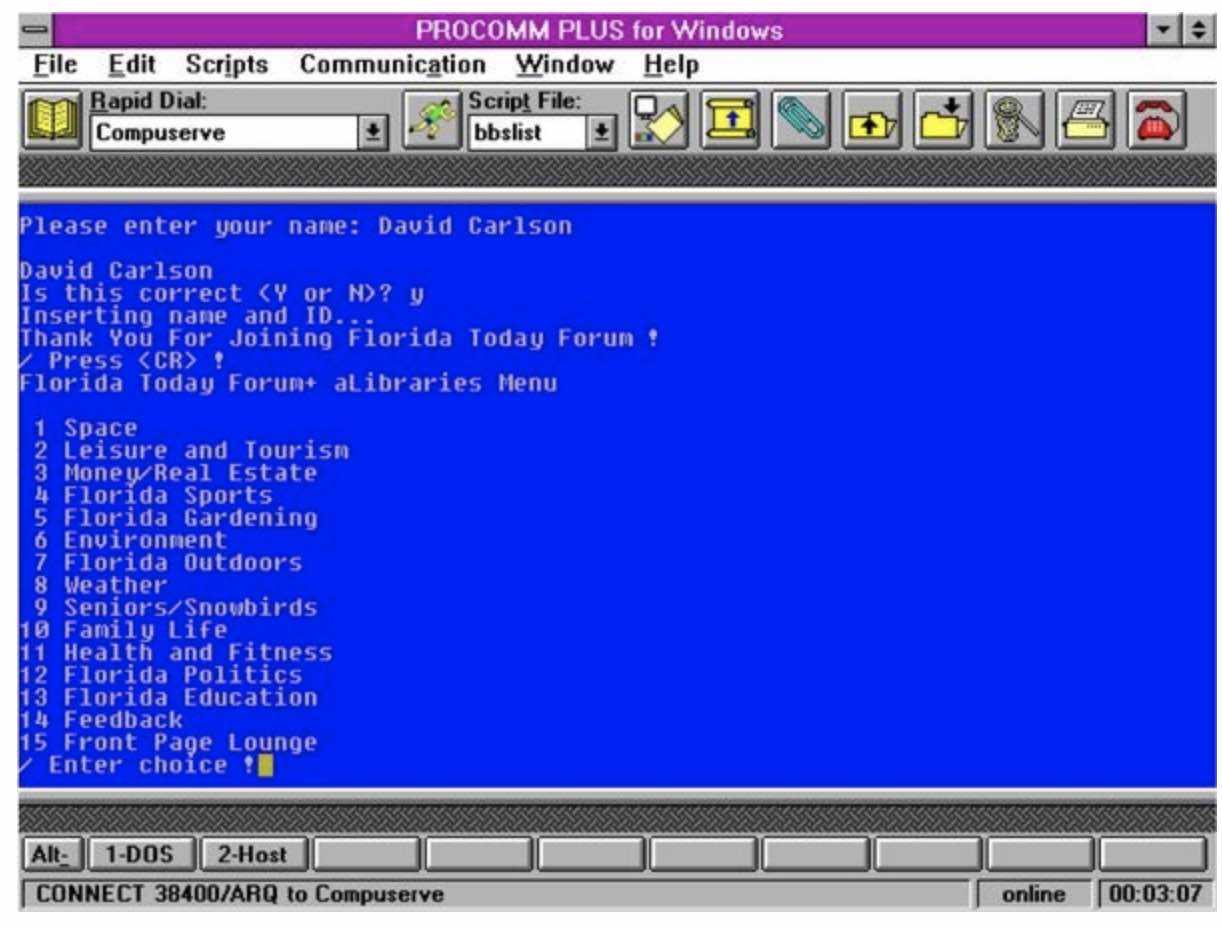
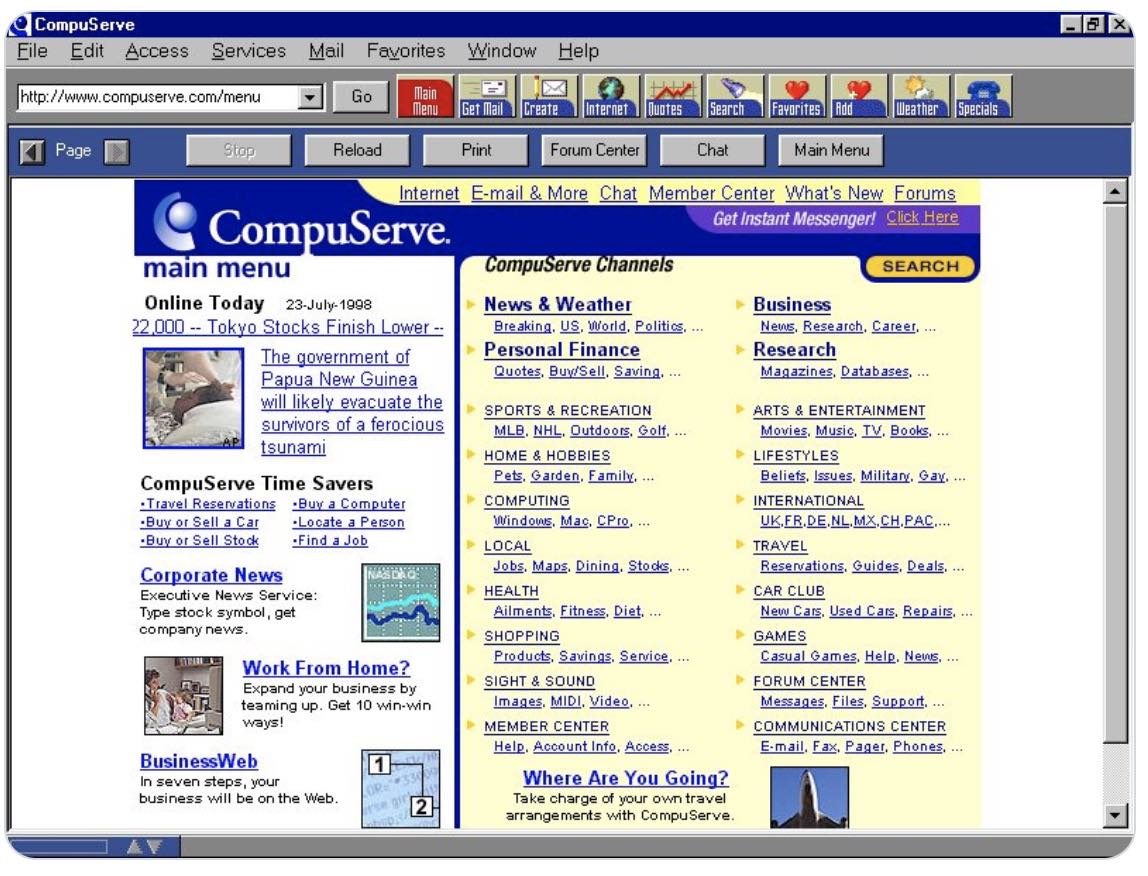
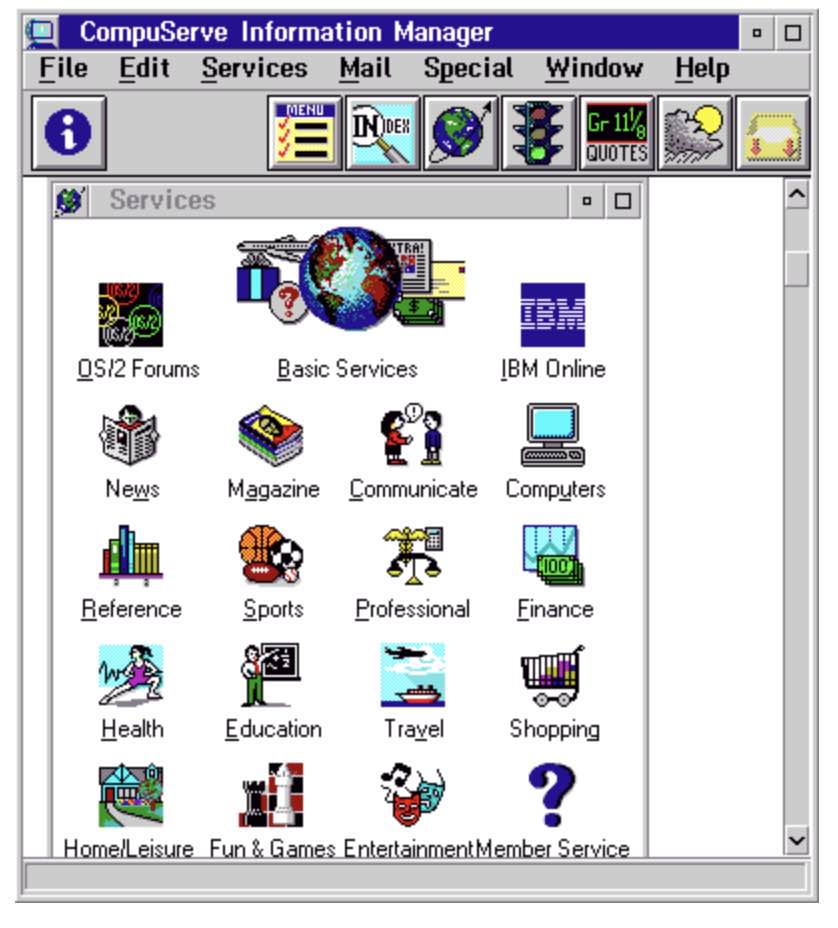
The software was distributed on Floppy Disk and later bundled on CD-ROM
The "Users" of these services were called "Members" who joined "Communities" of interest to "Participate" in sharing ideas and stories
Sounds familiar?
The breakthrough narrative came early in this wave. It was something called Metcalfe's Law (Later known as network effects) - "the value of a communications network is proportional to the square of the number of its users"
It was basically a marketing campaign designed to sell Ethernet (ie Computer Networking Equipment)
In 1989 these online service providers rolled out connectivity to the internet... Bill Gates wrote a book (the Road Ahead), The Clinton/Gore Campaign headlined their commitment to the Information SuperHighway and to everybody's surprise... This changed everything...
Web 1.0 - Browser Wars
Arguably the introduction of Web Browser set computing back 20 years (i.e. Text Markup Language (Think: Wordstar)) - The design challenge was bandwidth
The UX was slow and static (ie primitive)
Designers worked around the challenge using a plugin called Flash
Programmers worked around the challenge using ASP and Javascript
Marketing Slogans: Information Superhighway, Network Effects, eBusiness and eCommerce
Leading Brands: Yahoo, eBay, Amazon, eTrade, Microsoft, Cisco
The winners? Manufacturers of Routers, Walled Gardens (List Engines) and those who invested heavily in Ad Fraud and put the audience to work
Reality: Supply side outstripped demand - The decade long boom became a bubble and in 2000 it burst
The agency of the future was the agency of the past - digital wasn’t a blip on the radar - they sold clients stories that changed the game
Management consultants sold digital transformation packaged as eBusiness
Arguably the breakthrough innovation wave was over by 1995... but I've covered that elsewhere

Web 2.0 - Mobile Wars
Fibre Optics, ADSL and then Mobile Broadband speed things up and allowed designers & programmers to throw more data up and down the information superhighway - The UX design challenge was the explosion of screen shapes and sizes
The UX became richer - CSS HTML5 replaced Flash
Programmers upgraded to Fatware like XML and JSON, AJAX and Rest APIs
The devices/screens became smaller and the desktop was disrupted by the smartphone
Mobile Apps disrupted desktop web browsers
Marketing Slogans: Social Media, Smart everything but especially phones, Network Effects, Mobile Commerce, Social Commerce, Mobile Apps, Social Influencer
Leading Brands: Apple, Google, Facebook, Amazon, Netflix, Alibaba, Tencent, Baidu, Twitter
The winners? Manufacturers of Mobile Handsets, Walled Gardens (List Engines) and those who invested heavily in Ad Fraud and put the audience to work
Reality: User adoption grew rapidly but supply side outstripped demand but but bots filled the gap
The agency of the future sold clients mobile experiences, social engagement, search engine optimisation, likes, shares and page views
Management consultants dropped the eBusiness tagline, thought a bit about rebranding to mBusiness but in the end just sold digital transformation
Web 3.0 - The MetaCryptoVerse
Today the media rich UX is better than what CD-Roms delivered in the early 1990’s
It took the world 20 years to recover from the WWW Browser disruption
So what’s next?
- The UX design challenge will be the explosion in device types (Glasses, rings, ear pods, full body haptic suits etc)
Is Web 3.0 The internet of things, the Metaverse (Think VR/AR Games) or crypto?
Marketing Slogans: Decentralisation, Semantic Web, Smart Contracts, Metaverse, Network Effects, Distributed Ledger
The winners? Most likely the Manufacturers of wearables (Think: Glasses) & Sensors, Walled Gardens (List Engines) and those who invest heavily in Ad Fraud and put the audience to work
Leading Brands: ? - Some say those who invest in a CMO (Chief Meme Officer) but that's so Web 2.0. Besides this idea is in vogue with VCs ATM (ie the marketing equivilent of Taxi Drivers offering tips on stocks)
Management consultants repackage digital transformation as … Let there be Change and Make your Impact … but in reality it will be the all about investing in the Intelligent Corporation with a focus on building AI, Monitoring and Crypto capabilities
Meanwhile the agency of the future sells clients … Stories that change the game
So, after 50 years of gestation, what's changed?
Obviously the quality of the UI/UX
But it has to be recognised that the "Users" and "Memebers" still do what they did back in the 1980's
They join "Communities" of interest (Think: Platforms/Mobile Apps) to "Participate" in sharing ideas and stories
The killer apps continue to be messaging, email, games and shopping
Would it it be reasonable to suggest the killer apps of Web 3.0 will be messaging, email, games and shopping (Think: Trading)?
If the VCs and Big Tech Vendors are going to cash in on a new cycle of techno-utopian optimism do they need to change their story to change your game?
What do you think?
Part 2: The Internet of Money
The central idea to emerge from the ExCapite Journey was this..
(For information stored in a database) Meaning is irrelevant, the network effect translates into an explosion in irrelevance, the behaviour, the act of manufacturing a moment of meaning, the mash-up, the endless remix, more often than not expressed as a list, is now the message... The fractal narrative.
I called this the Fragvergence
In 2014 we explored the question... (the Bitcoin Question)
What happens when money becomes a fractal narrative?
The answer was…
It becomes, as we have seen before, just like the Credit Default Swap, a bubble of labyrinthine proportions.
And we discovered here was the problem with Bitcoin. It doesn't address the real problem - i.e. what happens to money, or more accurately transactional media, or better still commercial and public trust, when it becomes a fractal narrative. It only address the imagined problem. i.e. Disrupting paper.
And yes there are two dimensions to this. The first is the labyrinth. The fractal narrative of the money markets. The second is what happens when our institutions become just lists. Lists scattered across a network of databases.
You see we are attune to the idea of data disrupting paper. What we are not attune to is this idea of data disrupting space. Or more accurately how information architecture is disrupting architecture. Banks become lists, manifest as a collection ATMs, PC and smartphones. Office blocks become lists manifest as web pages and mobile apps. Hospitals become lists manifest as patent records and augmented beds. Government agencies become lists manifest as web pages and pdfs. Libraries become Google. Which is to say they become lists. Our clubs and churches or more accurately our communal meeting places become Facebook pages. Which is to say they become lists. Our shops become lists. Be they Amazonian or iTuna. Or schools and colleges become Moocs. Which is to say they become lists.
Now these are ideas. Conceptual models. Thought experiments. Dare I say TEDs? worth exploring. What happens when our world evolves from the bucket list to a bucket full of lists?
What would this new architecture look like? How do we interact with these new spaces? And what are the types of games we will be playing to occupy our days? What is it like to live life as an endless fractal narrative? What will be the sum of our days? The sum of experiences in this brave new world? Of life lived as a bucket full of lists. Virtual or otherwise. Just how will these lists shape our behaviour? Regulate our emotions? Facilitate our transaction? Engineer our experiences? Provoke our responses? Design our Desires? Juxtapose our inner tensions? Manipulate our self image? Game our expectations?
We discovered these are conversations worth having... with others.
Roll the clock forward 7 years and we discover the volume of the MetaCryptoVerse narrative has been amped up way past 11
The chant has been ringing out for over a decade
Bitcoin isn’t Money—It’s the Internet of Money
And the thing that's charming about it is the chant changes with each new verse.
It is at once a currency, a platform, a protocol, a network, a notary service, a distributed ledger, a bonded identify, a transport layer, a scripting language, the new TCP/IP, PGP for money, decentralized, disruptive, permissionless, programmable...
Yes the list is seemingly endless.
In 25 words or less? Trust me, this is the future of everything, because it can be anything you want it to be.
It is, very simply, the Internet pitch, the Information superhighway circa 1993-1995, all over again.
Which kind of surprising, because the Internet is, like the PC, so last century. The love child of the 60's. Still adored, as if a toddler, almost 50 years on.
And one can't help but wonder: Isn't it time we all moved on from this hyper-connected moment?
This veritable virtual love-in?
Can't we all, just well, grow up? Get on with it? Ask the deep and meaningful question. It's been 50 years and it's still yet to live up to its unlimited potential. Why? or, better still why not?
And what of the future of money… this crypto currency revolution?
Well, once you put it into perspective, you quickly discover, 12 years in to the game, Bitcoin has delivered, within the same timeframe, just 1% of the impact Credit Default Swaps had on the world of finance.
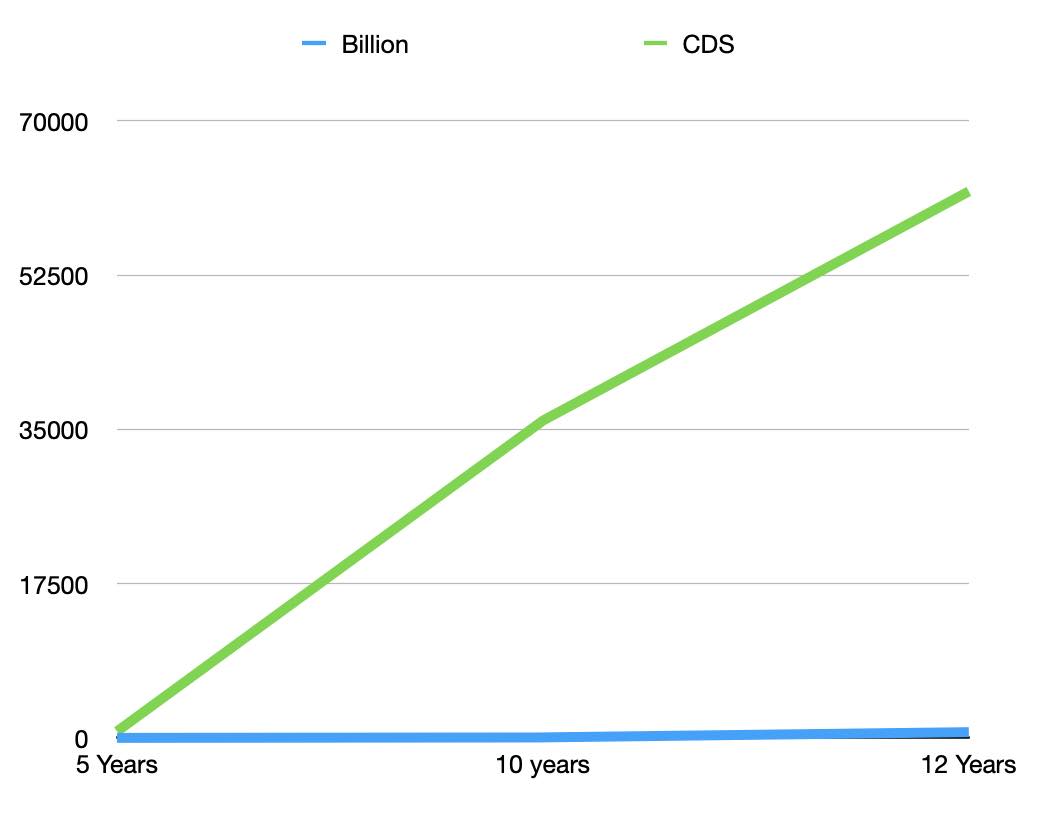
But let’s not stop there. Let’s put this embryonic, disruptive narrative into the wider perspective
Because for all of Bitcoins failings. At least by 2021 it has achieved more traction than our commitment to funding a solution to climate change
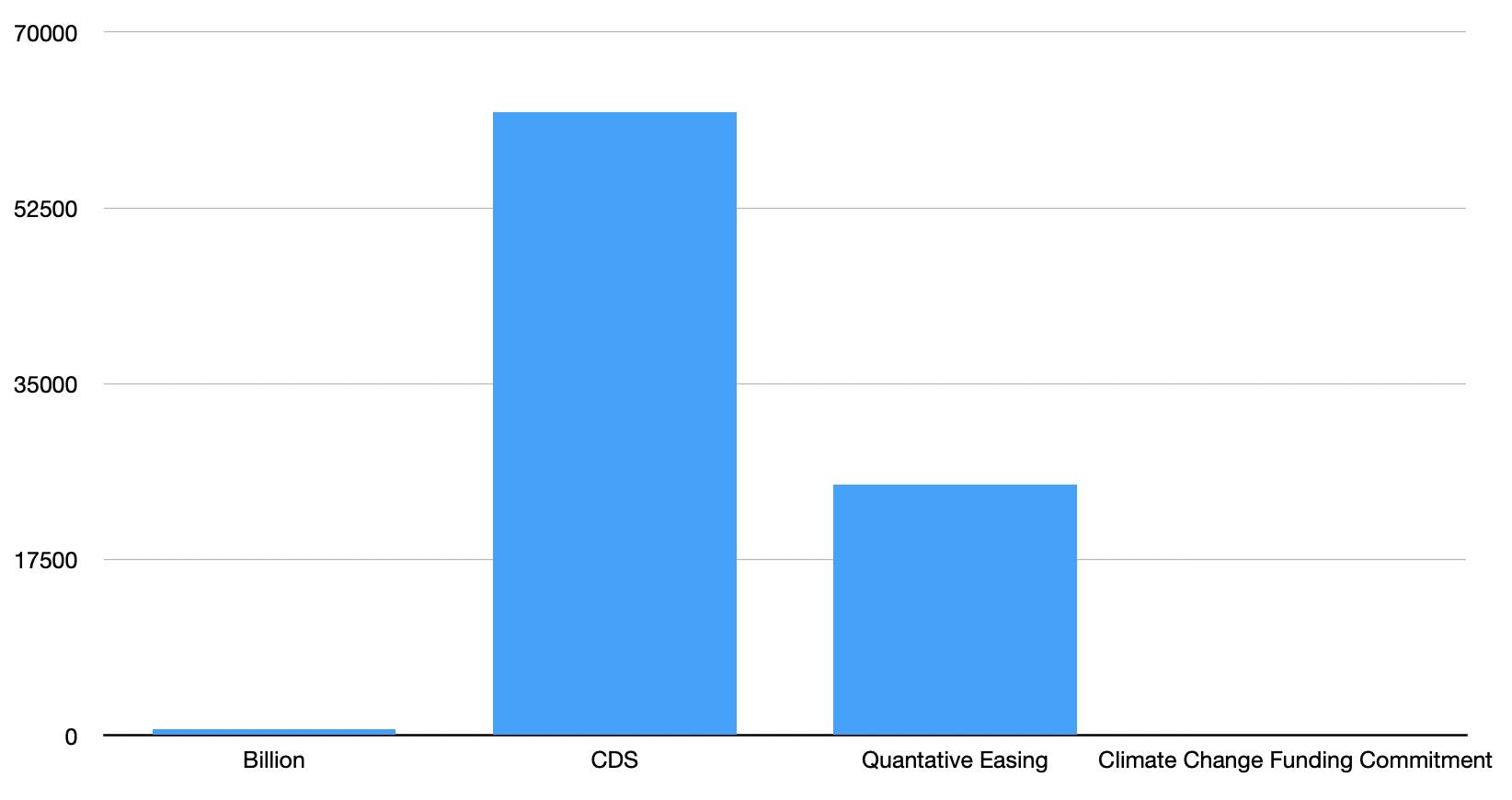
Part 3: Trust and Territory
The DAO (Decentralised Autonomous Organisation) is an emergent idea
I find it fascinating if only because it is a reinvention of the corporation but without the legal framework to protect members from the actions of any other member in the network
It takes the whole idea of investing trust in the untrusted to a whole new level
And upon examination it has led me to contemplate the relationship between trust and territory
Let’s ponder the question: What is the most perfect form of an emergent trust network?
I would argue it is the Ponzi Scheme
A Ponzi scheme is a form of fraud that lures investors and pays profits to earlier investors with funds from more recent investors. The scheme leads victims to believe that profits are coming from legitimate business activity (e.g., product sales or successful investments), and they remain unaware that other investors are the source of funds. A Ponzi scheme can maintain the illusion of a sustainable business as long as new investors contribute new funds, and as long as most of the investors do not demand full repayment and still believe in the non-existent assets they are purported to own.
Trust is the catalyst that fuels the growth of the Ponzi Scheme
The network grows because those outside the scheme suffer from FOMO on the promise of high returns with little or no risk generated by this secretive, new but complex investment strategy (Sounds familiar?)
It is a belief system. The ties that bind it are those of trust. Trust in the network. Trust in the participants
Now let’s consider a variant on the Ponzi Model
Let’s examine the question of incentivising the network
I have previously explained elsewhere what most investors get wrong about network effects
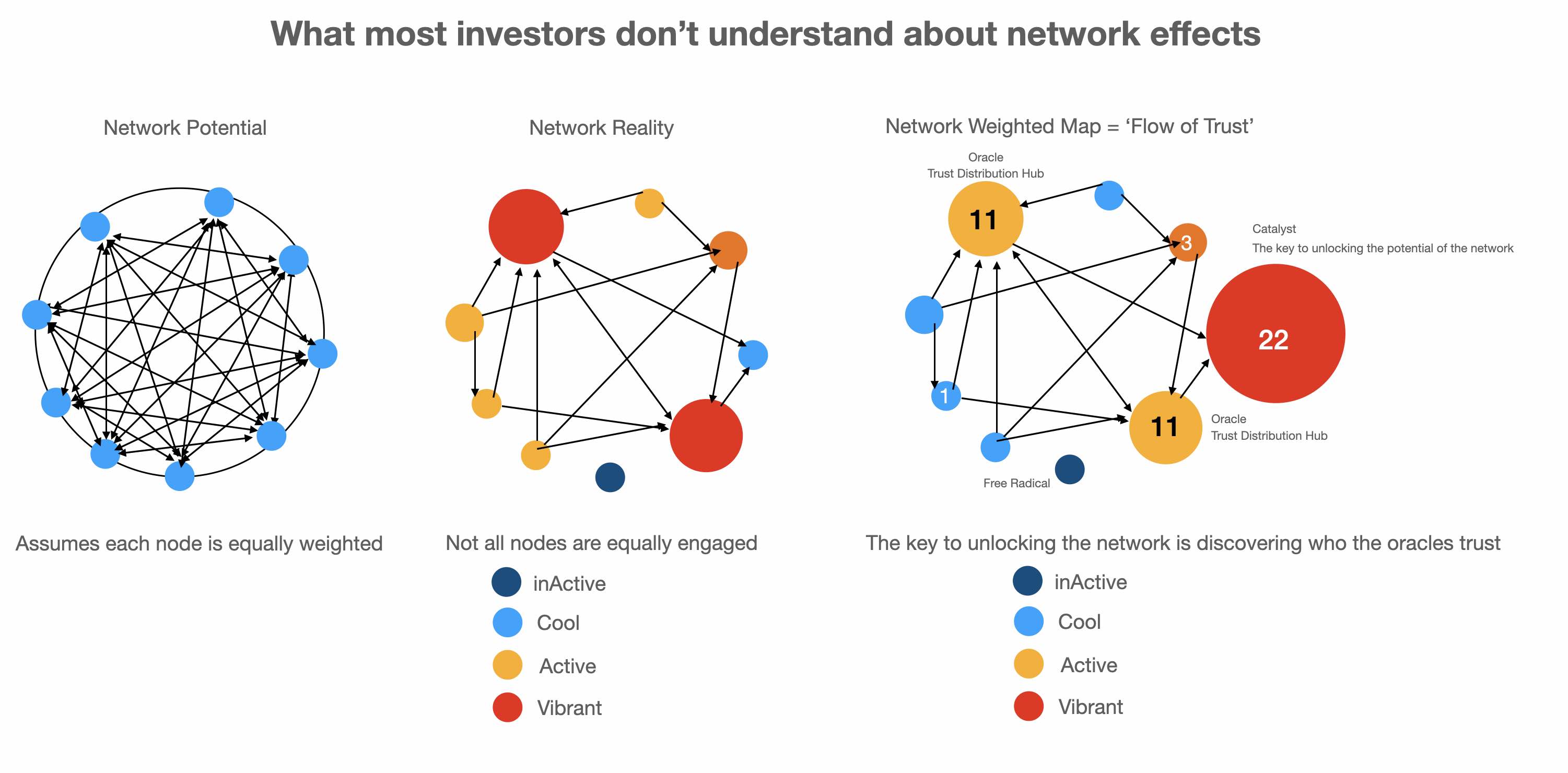
Now I want to explore How you may be able to merge the Ponzi with Network Influence to create a decentralised network renumeration model for a marketplace

You can see here that the DAO's share of the transaction conducted across the network would be 5%
But this is only a very simple network

and we can see that by adding another layer to the network (ie Ponzi Model) we discover the DAO's take is halved. It is now 2.5%
As the network/ponzi grows the DAO's take is diminished
But this reduced share is compensated by the growth of the network (ie the impact of the network effects)
Moreover you can see how the game on both sides of the marketplace becomes a game of territory
Much like the game of Go players battle for share of the network nodes
The key here being this isn't a game of accumulating tokens. It is a game of accumulating nodes
Just like the game of risk more territory delivers the ability to generate more tokens
Moreover you could bundle or unbundle this territory and trade it as NFTs
A game within a game. The MetaCryptoVerse Labyrinth of Real World Trust
But here's the thing... within the context of the MetaCryptoVerse narrative I want you to think about how such a reinvention of the modern marketplace could solve the challenge of global warming while still delivering economic growth
Further Reading: Never Mind the Currency. What's the game?
Part 4: If NFTs are the answer... what's the question?
Let’s begin with the fundamental question
What is an NFT?
It’s a pointer
This is not new
On the web an embedded hyper link is a pointer
Basically the world wide web is a network of pointers
Obviously an NFT is different to a Web Link
Obviously it’s a new kind of pointer
Actually the answer to that is yes and no
An NFT is a web link. But rather than being embedded in the web page it’s stored in a database
Again. This is not new
Google is a database of pointers
It is in the business of counting pointers
The benefit is you get to places quicker because now you have a map
It then monetises the map by allowing 3rd parties to promote their links above the most popular links on the web
Basically Google centralises the decentralised network of links
An NFT Exchange is a pointer exchange
It allows collectors to buy and sell pointers stored on a database (Distributed or otherwise)
It lacks the rigour of a Google in as much as it is fragile like the web. As the web evolves and pages spawn and die these pointers to nowhere (or, more accurately nolongerhere) become obsolete and redundant
You are in effect in the business of trading memories... the overwhelming majority of which will one day be forgotten
A phenomenon I have previously described 10 years ago as digital Pheromoning: The conscious or subconscious activity of marking out territory on the network with Pheromones.
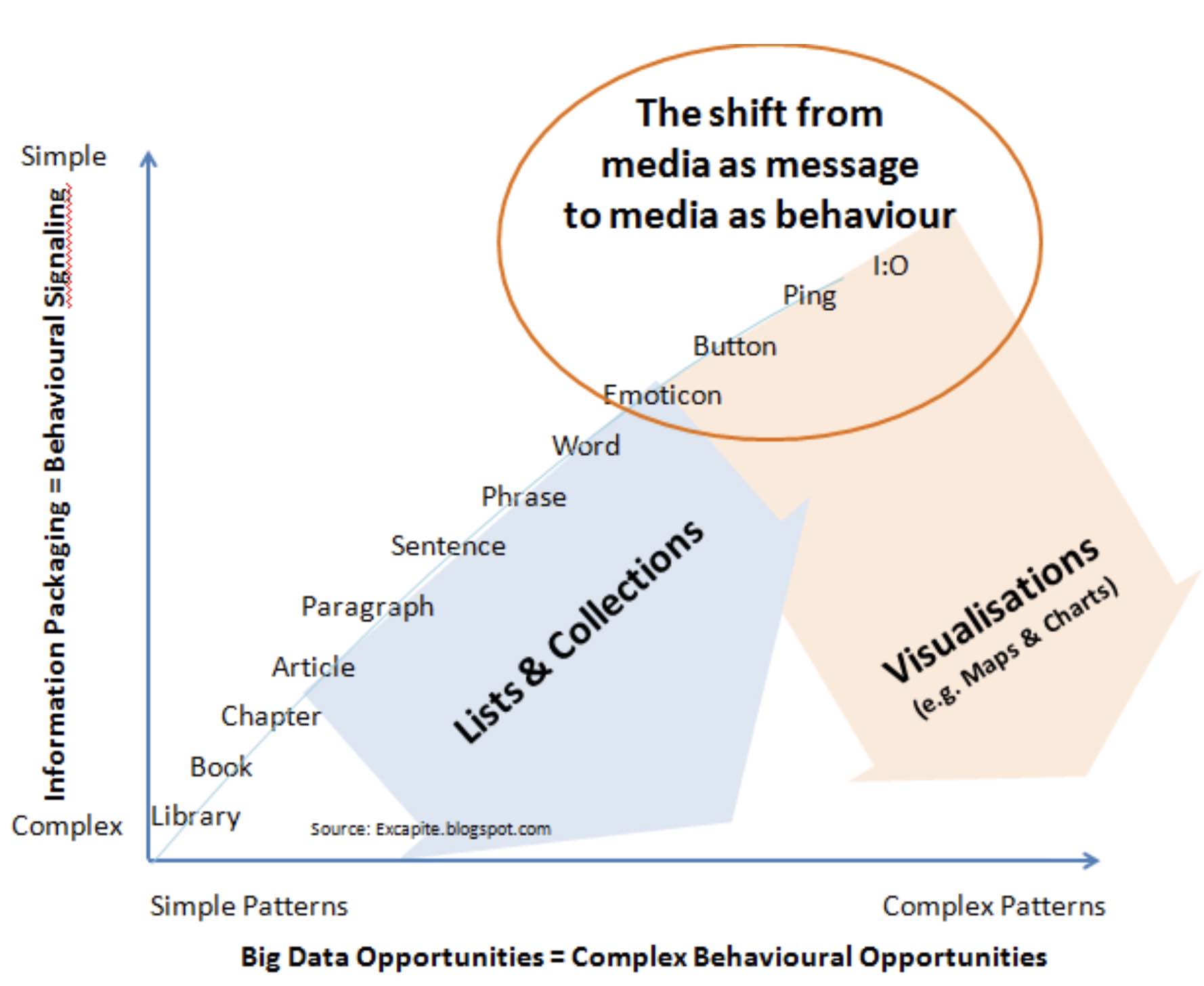
Now I can hear you thinking… that doesn’t sound exciting
Well neither was launching yet another contacts database until it was rebranded as social media
Let me show you what I mean…
Imagine what happens when
Scroll, like, and share your favourite web links becomes
Discover, collect, and sell extraordinary NFTs
Yes. It’s the past, the memory of the exchange, repackaged as something bright shiny and new, but with a twist
You see NFTs are a case study in how to ignite the market’s imagination for transformative digital makeovers
Step back for a moment and imagine you are part of a syndicate of Venture Capitalist and Angel Investors who have invested heavily in the crypto space
You face a challenge.
Adoption of Bitcoin, Blockchain and Crypto, for all the hype over the past 10 years, has been relatively slow compared to previous waves of Financial Innovation (e.g. Credit cards, CDS)
You have a portfolio of underperforming crypto assets
You are desperately seeking a breakthrough narrative.
You need to unearth the network effects of the crypto era.
How do you achieve ignition?
Well in truth it’s as easy as NFT
i.e. New Fashionable Tech
Let me show you how
You have an investment or three in two sided marketplaces and/or the backbone database technologies
The challenge is to rapidly scale the exchange of digital assets
You do this by seeding both sides of the market
Step one is to seed a network of artists to generate a portfolio of NFTs
Step two is to seed a market for these NFTs
You do this by seeding a network of buyers to trade in these NFT’s
Step three is seed a network of commentators to generate positive and negative spin (ie noise) on this revolution in the financing of the arts (ie No Conflict. No Interest… If you’re not into Meta. You don’t Meta )
You now have all the classic ingredients of a digital feedback loop
Artists are making a fortune selling links to their artwork
Investors are making a fortune trading links to these artworks
Influencers are monetising their influence
Commentators are desperate to have an opinion
and you now have a portfolio of high performing crypto assets that can be unloaded on the NASDAQ or NYSE
You have manufactured the conditions of FOMO on steroids
It’s by any measure a WIN:WIN:WIN:WIN:WIN
But is it innovation?
Is it the much needed deep, game changing innovation that will ‘Save the planet?’
No. Just like the last breakthrough digital narrative (ie the gig/sharing economy). It’s just another short on the American Dream
Further Reading, Listening and Watching
Mapping the NFT revolution: market trends, trade networks, and visual features
- This is first comprehensive quantitative overview of the NFT market
The week in art - WTF are NFTs? (Feb 2021)
A Simple NFT Primer - Keir Finlow-Bates
Part 5: America Dreams
To understand what is being shorted we need to understand what is the American Dream
If we ask that bible of communal wealth… the WikipediA… we discover
The American Dream is rooted in the Declaration of Independence, which proclaims that "all men are created equal" with the right to "life, liberty, and the pursuit of happiness."
[It] is a national ethos of the United States, the set of ideals (democracy, rights, liberty, opportunity and equality) in which freedom includes the opportunity for prosperity and success, as well as an upward social mobility for the family and children, achieved through hard work in a society with few barriers. The term "American Dream" was coined by James Truslow Adams in 1931, saying that "life should be better and richer and fuller for everyone, with opportunity for each according to ability or achievement" regardless of social class or circumstances of birth.
This hope, that anyone can earn success if they work hard enough, is manifest in that Great American Novel: The Great Gatsby
If you are clever you can see how the original ideal of Happiness has been substituted for wealth
Or, more accurately Wealth = Happiness
Indeed if we were to reduce the American Dream into an equation it would read
Happiness = Wealth
Suggesting your Dream can be scored
Big Wealth = Big Happiness
Small Wealth = Small Happiness
Now if you were to map wealth distribution you would discover a Zipf Curve
American Wealth is concentrated in very few hands
Suggesting, by any measure, if Wealth = Happiness America must be the most unhappiest nation on earth
But here is the trick. The sleight of hand.
It all depends on how you define wealth
or, more accurately, how you score wealth
The trick that social media pulled was to redefine wealth as follower count and the sum of your likes and shares
The reward was happiness (or frustration) as defined by your engagement score
The internal dialogue became one of I have lots of followers, I have lots of engagement… why aren’t I happy yet?
Simply answer: I don’t have enough followers, likes and shares… Work harder
This is how Social Media redefined the game of Wealth = Happiness for a generation or two of Americans
and, because secretly or otherwise, everyone wants to be an American… the rest of the world
In truth the score didn’t really matter because simply competing. By contributing. You give life meaning.
This then is the gateway to understanding the meta verse
It’s a heady mix of belonging, contributing, meaning, happiness and wealth all rolled into one overarching score
Your social score
Your score for life
Or, more accurately, the measure of our shared, collective dreaming
So a short on the American Dream is an investment in shrinking our collective dreaming
Part 6: Of Doppler Trails and RelationBlips
Note: This was originally posted in the Summer of 2014... But it feels it belongs in this thread...
My impression of social media, prior to embarking on this experiment in mapping the journey into the absurd was that Social Media represented the Doppler Trail of a society in decay. Relationships dis-intermediated by technology are no longer relationships, they are memories of the relationship.
A superficial fiction. RelationBlips.
Relationships as momentary spectacles of recognition. A like, a tweet, a share. Are not expressions of belonging. They are the memory of what it was be be part of the tribe
Relationships being the shared moments spent together in each other's company and the stories, the memories, that record those moments.
Almost 5 years on and I have witnessed nothing in the result sets to suggest this hypothesis was fundamentally wrong. Having gorged itself on the low hanging fruit scattered along the road to urbanisation the Western Democracies, and in particular the US, has struggled to make the connection in the dash to virtualize the economy.
And at this moment I am reminded of Tocqueville's musing on Democracy in America.
“In democratic societies, every citizen is habitually busy considering one very small subject, namely himself... His ideas are either self-orientated and clear or his thoughts are very general and vague; the space between them is empty.”
"In the United States, when the majority has irrevocably decided any question, discussion ceases - Why? - The moral power exerted by the majority over thought - Democratic Republics render despotism immaterial... I know of no country where there is generally less independence of thought and real freedom of debate than in America... The moral authority of the majority is partly based upon the notion that there is more intelligence and more wisdom in a great number of men collected together than in a single individual"
"In democracies nothing is greater or more brilliant than commerce. It attracts the eyes of the public and fills the imagination of the crowd; all passion and energy are directed toward it... Those living in the instability of a democracy have the constant image of chance before them and, in the end, they come to like all those projects that chance plays a part. They are, therefore, all led to commerce, not only because of the promise of profit but because they like the emotions evoked."
Could it be that Tocqueville grasped intuitively, all those years ago, that in a democracy society, motivated by the economics of vanity, friendships and social ties [of any description: Strong, Weak or Faux] are little more than another form of reflected glory (e.g. Education, Housing, Cars, Boats, Travel)?
Social media's roots lay deep in the American landscape. Arguably the cumulative expression of 500 years of the American Way. The only problem being, like so much of the late 20th Century, it was invented in Japan.
But let's not small matters get in the way of the flow. The race to the edge of reason.

And let's see if we can't find words. Simple words to express Tocqueville's observations more succinctly.
“In democratic societies, every citizen is habitually busy considering one very small subject, namely himself... His ideas are either self-orientated and clear or his thoughts are very general and vague; the space between them is empty.”

The moral power exerted by the majority over thought
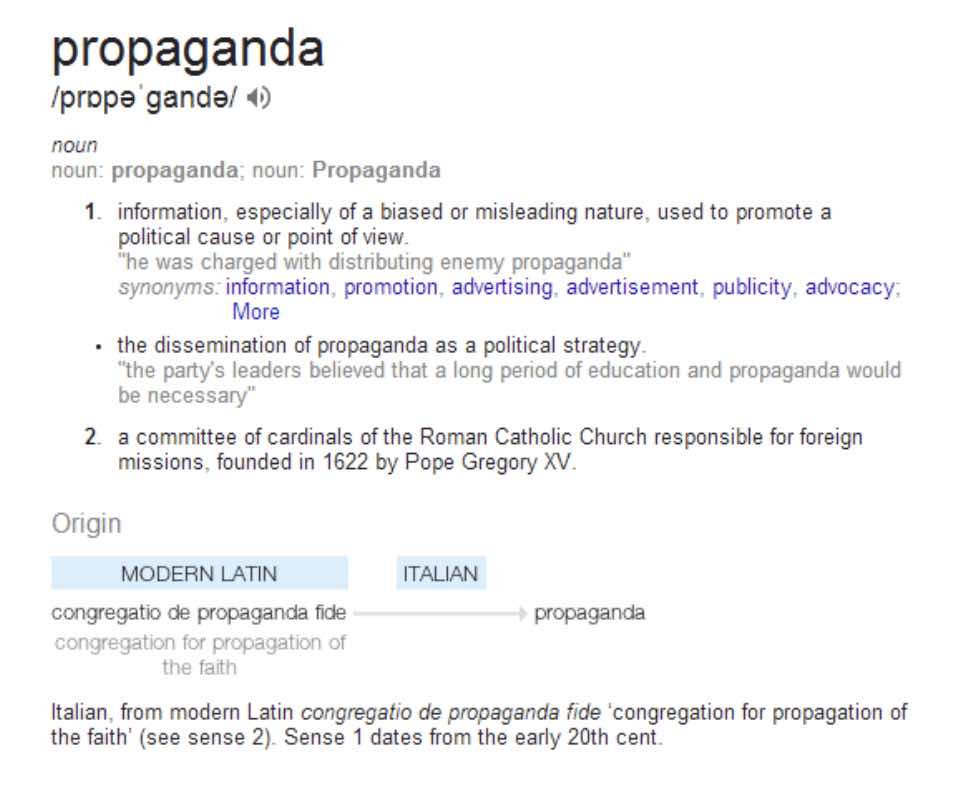
Nothing is greater or more brilliant than commerce... all passion and energy are directed toward it

For isn't this Social Media in a nutshell? The opportunity to Pontificate, Proselytize and of course Propagate... the faith? The new religion.
Why can't the world be more like me... perfect in every way?
And I don't mind admitting I have struggled with this. Much the same way one struggles with a Rubik's Cube. A puzzle of labyrinth dimensions.
And I am left to contemplate old words. Old ways of thinking. Less disrupted, more augmented by technology, these puritanical roots. These expressions of deep faith in the power of acts to change the world.
American hasn't so much evolved in 500 years, as been augmented, by its technologies. Its toys. Its spectacles.
Truth be told it still hasn't found what it set out to discover all those centuries ago. Truth be told, it never will.
Part 7: American Dream 3.0
This week @ConstitutionDAO has been running a crowdsourcing campaign to buyback the US Constitution for the people.
At the time of writing - a day before the auction at Sotheby’s - they have raised about US$31.2 Million
It doesn’t matter if they raise enough money to buy it or not. The PR campaign raises the profile of DAOs and Crypto
It is a high visibility marketing campaign designed to deliver one message
DAOs are the future of community or more precisely, how communities of the future are being forged (ie regulated)
There is of course a deep irony to all this
The American Dream wasn’t something the Mayflower pilgrims brought to America.
It is something they discovered when they got there
It was something they exported back to Europe
The winds of change - and more than a few heads - blew through the Ancient Regime and the rest they say is history
Anyone who reads the Mayflower Compact - Dare I suggest the origins of the DAO? - will discover what the pilgrims and their followers brought to America was a very different ideal
IN THE NAME OF GOD, AMEN. We, whose names are underwritten, the Loyal Subjects of our dread Sovereign Lord King James, by the Grace of God, of Great Britain, France, and Ireland, King, Defender of the Faith, &c. Having undertaken for the Glory of God, and Advancement of the Christian Faith, and the Honour of our King and Country, a Voyage to plant the first Colony in the northern Parts of Virginia; Do by these Presents, solemnly and mutually, in the Presence of God and one another, covenant and combine ourselves together into a civil Body Politick, for our better Ordering and Preservation, and Furtherance of the Ends aforesaid: And by Virtue hereof do enact, constitute, and frame, such just and equal Laws, Ordinances, Acts, Constitutions, and Offices, from time to time, as shall be thought most meet and convenient for the general Good of the Colony; unto which we promise all due Submission and Obedience. IN WITNESS whereof we have hereunto subscribed our names at Cape-Cod the eleventh of November, in the Reign of our Sovereign Lord King James, of England, France, and Ireland, the eighteenth, and of Scotland the fifty-fourth, Anno Domini; 1620
The keywords here being 'Submission and Obedience… for the general Good of the Colony'
Which make for an interesting comparative study with the ideals of "all men are created equal" with the right to "life, liberty, and the pursuit of happiness."
But we’ll leave that for another day
What is interesting - of course - is the inherent tension between the two statements
A tension that lies at the heart of the American paradox
But again we’ll leave that for another day
At the heart of the pilgrim’s quest was this drive, this quest to discover or at least create a new Utopia lying to the West
It is this passion that fuels the DAO movement.
It is quintessentially the quest for the American dream repackaged for the 21st Century
But what is interesting is these digital (or should we now call them Meta?) pilgrims continue to look to the West for both their inspiration
and what lies West of California? China, Japan and the lesser Asian Tigers
Those mysterious and mystical meta lands of Avatars, Anime, Pokemon and Social Credits
Today the American Dream 1.0 is 400 Years old
Today the American Dream 2.0 is 245 Years old
Superman - that homage to the Nobel Savage who inspired all this disruptive dreaming and who was, by the beginnings of the 20th Century, fading into memory - is in his 80’s
Maybe it's time for an American Dream 3.0?
Less concentrated, decentralised and more distributed... infused with Asian Dreamings
More DAO... and, dare I say, more Meta?
Part 8: Meta Malls
Today Accenture's APAC FinTechLab is holding its virtual reality demo day event
If you click on the link you'll discover you can meet the 2021 finalists and interact with them live in their #virtualreality booth (See link to promo video)
Here's a snapshot of the promo video

Watching the video took me back a quarter of century to a VR project I worked in 1995

This was Megamall. A CD_ROM VR shopping centre that was distributed on the cover of popular Women's Magazines here in Australia
It utlised Apple's QTVR and (now Adobe's) Macromind Director
As for the user experience? Think Tomb Raider played out at the Shopping Mall
Of course today it would be positioned as more MetaMall than MegaMall
But it was launched around the same time as Amazon
It was as richer UX as Amazon was dull
So why did Amazon succeed where the MegaMall failed?
Lots of reasons.
Cost. Lists engines are cheaper to build and maintain than VR worlds
Distribution. In reality VR worlds didn't scale on the internet in 1995. The bandwidth was optimised for the Amazon experience.
But I think the key insight was this was designed as a 'Game for Girls' but in reality the skeuomorphic UX design was sterile once you got past the wow factor
We discovered very early on VR worlds may engage but they can be far from sticky
The takeaway was we had designed a 21st Century world but we hadn't delivered a 21st Century UX
This inevitably brings us to the Metaverse and more specifically Meta's vision for the Metaverse
And the inevitable question: Will the Metaverse - just like the Web 2.0 - be just another 90's cover band?
Or, is there something special about this latest realisation of the future of interactive content that will take a new generation of designers and dreamers to places we have never seen before? (i.e. is there a life beyond the list?)
At first glance the flaw in Meta's Metaverse is it is trying to be all things to all people... but, hey, who knows? I might be wrong...
Part 9: The Golden Rule
Let's revisit some old ideas about engagement
Change the story. Change the game
It is a very simple idea
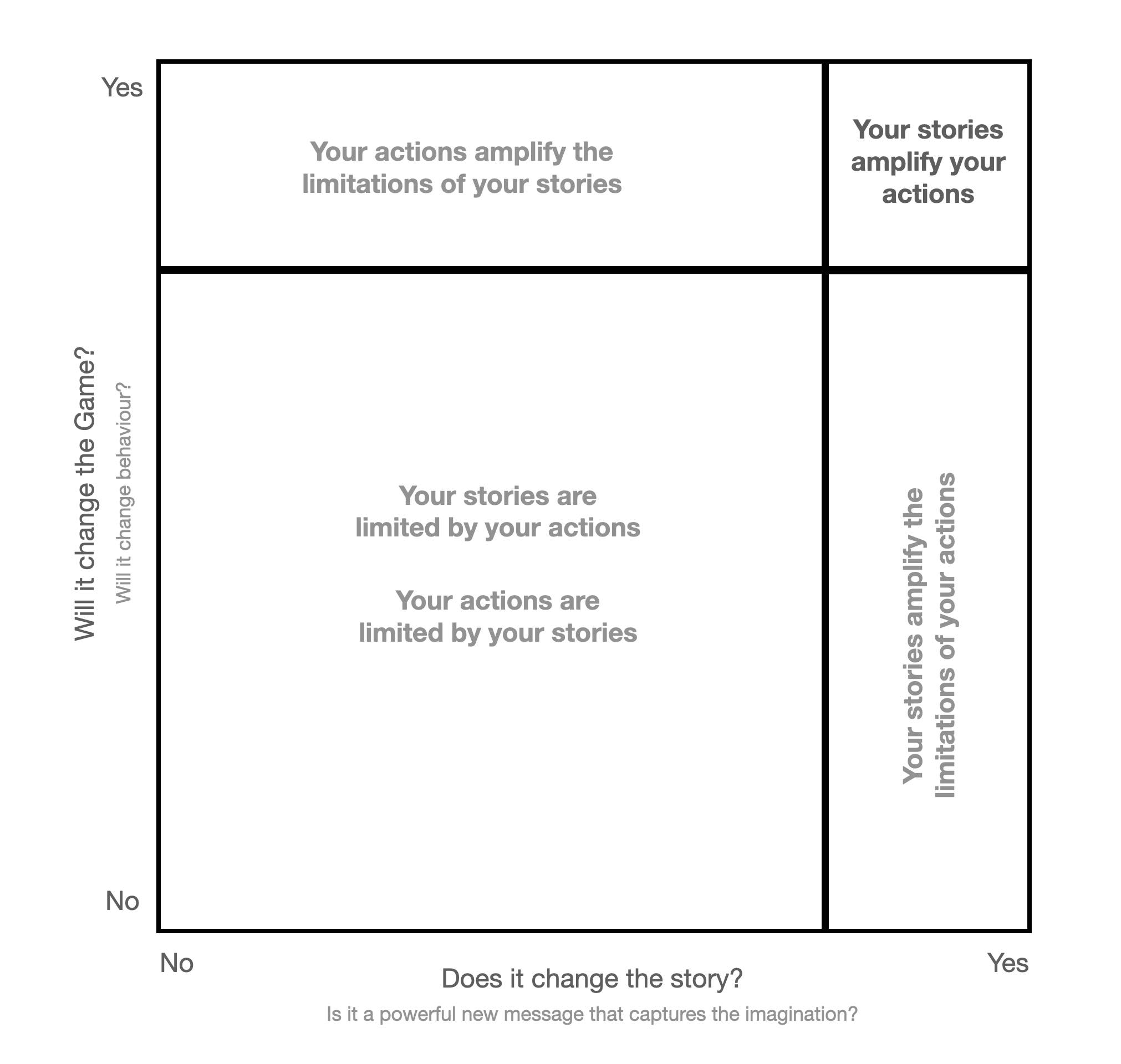
Think of it as Occam's Razor for your strategic thinking
Now let's take this idea one step further and see how we can apply it our marketing and innovation tactics
As I have said before very few campaigns (and by extension innovative new product launches) breakthrough and change both the story and the game
So how can we change our thinking to increase our chances of success?
It begins by adopting two old rules of thumb
The first from the world of advertising & marketing
One Ad. One Message
The second from the world of software development
One App. One Function.
and combining them into the golden rule
One Story. One Game
One Promise. One Action
... the perfect hook

... and this is why the challenge is so difficult
Ideas, creativity is emergent. It's divergent. It's contagious.
The urge, the desire, the overwhelming impulse is to expand, explore, experiment, add, inflate
When the real challenge is to reduce, distil, edit and reject
To focus on making it as simple - easy to engage, easy to understand - as possible
To illustrate what this means let's map the digital ecosystem to this idea of 'One Promise. One Action'
We'll begin with the social media platforms
Facebook: Share your life/stories (ie. upload your achievements onto a database) with your family & friends
Instagram/TikTok/Snap/YouTube: Share your photos/videos (ie. upload your achievements onto a database) and be discovered
LinkedIn: Share your work/stories (ie. upload your achievements onto a database) with your business network
Twitter/Medium/Wordpress/Blogger: Share your discoveries/insights (ie. upload your thoughts & impressions onto a database) with complete strangers
Roblox/Dribble/Fiverr/App Store/Spotify/GitHub/CodePen/Etsy: Share your work (ie. upload your achievements onto a database) and be discovered
In each case the task (Think: call to action) was to upload something onto a database with the promise it (Think: you) will be discovered (Think: seen/heard/promoted on a database)
You see how easy it is? Act and we promise you'll rewarded
One promise. One Action
The perfect hook. The perfect trigger... and (Hey Presto) a new addiction is born... as we all search for meaning on yet another database
The measure of meaning being your relative position in the lists (databases) you choose to populate
... and this idea. The quantification of meaning of life lived in the list. Points to the type of Players who will be engaged in the Game (Think: Target Audience)
Again we'll map this idea to the social media platforms
Facebook/Instagram/TikTok/Snap: A game for girls
LinkedIn: A game for professionals
Twitter/Medium/Wordpress/Blogger: A game for writers
Roblox/Dribble/Fiverr/App Store/Spotify/YouTube/GitHub/CodePen/Etsy: A game for creators
Kaggle: A game for data scientists
In each case the Players (Think Target Audience) was tasked (Think: called to action) to upload something onto a database with the promise it (Think: They) will be discovered (Think: Profit emotionally, reputationally or financially from the experience)
So (initial) success in the digital world comes down to a simple formula
One Tribe
One Promise
One Action
or, put another way
Change the tribe, change the promise and change the action
or, as I have said before
Change the Players, Change the Story and (You) Change the Game
Have a think about it... at least until next time...
and, before you go, take a look at this 25 minute deconstruction of the Roblox Business Model
See how they are profiting from applying the Golden Rule to the challenge of disrupting the global market for online games
Part 10: Passion without reason
Joseph Campbell (Best known for his book: The Hero with a Thousand Faces - ie the HEro's Journey that underpins Star Wars and much of our modern Cinematic Mythology) once said "Temple with images and stained glass windows, cathedrals, are a landscape of the soul.... [while the] function [of the artist] is the mythologization of the environment and the world"
Put another way, artists are the mythmakers of our day
As I have written previously. Until recently television was the temple that housed the landscape of our collective souls.
This is why on Television Brands sponsor rituals like the SuperBowl, Eurovision and the World Cup
Today it is our lists (e.g. Instagram and TikTok) that house the landscape of our collective souls
Arguably tomorrow it will be the metaverse
And so to the heart of the matter
Dare I say the story that will trigger the Metapilgrim’s Progress from this world, to that which is to come?
In the past I have written about tribes and their addictions
Of how tribes bring us to rest. They are best understood as crystalline constructs. Why? Because they are thrive on encouraging members to adopt endlessly repeating patterns of behaviour.
If you think I am wrong just think of how teenagers adopt the social norms of their tribe, their interest group. The strength of the tribe isn’t in its openness but in its ability to exclude behaviour. The exclusivity of we’re in you’re out, if you want in you have to be like us is at the heart of any tribe.
Of how tribes are ad-hoc collections of participants and observers, around points of interest (i.e. Point Attractors) and at the core of every consumer product. Be it Soap, Food, Travel, Fashion, Mobile Apps, Gadgets, Web Sites and now NFT’s and Metaverses. Lies a Deadly Sin (A Social Proof) and it is this sin that provides the catalyst for viral growth.
We can speak of American consumers being tribal in their addictions & unwaving fanatical(?) beliefs E.g what do Pilgrims, Puritans, Mormons, Evangelicals, Weight Watchers, Fans of Myers -Briggs and Apple geeks have in common?
Likewise we can speak of American corporations being tribal in their behaviours/rituals (systems), products/offerings (Styling) and representation (branding/outfits/costumes) - e.g. McDonalds vs Starbucks vs Apple
and of how these endless list engines mirror this tribal reality…
If social media (e.g. Facebook and Twitter) can teach us anything, it is that these networks are self replicating. Everybody adopts the same behaviours, the same practices, so that they can be a part of the network. After all wasn’t this Facebook’s strength and MySpace’s weakness. The seemingly universal preference of the imposed order and regimentation of the Facebook way over the freedom and chaos of doing what you like on MySpace? When it came to being part of the nouveau social crowd it was the individuals, the true originals who got left behind in the rush to conform?
“Find me on Facebook” freely translates into “Find me, doing the same thing as you, on Facebook”... or Twitter, Pinterest, LinkedIn, Instagram, Tumblr... and so the seemingly endless list goes on.
These social networks lock you into specific patterns of behaviour that ultimately allows the network to provide the illusion of emergent creativity when in fact they have brought the system to rest around a limited number of specific patterns of behaviour. In most social applications this amounts to little more than the monitoring and maintaining of lists (i.e. Nodes and Messages).
Moreover these lists represent the purist expression of the medium. Transactable memory.
Now I wrote this almost 10 years ago.
Today I would argue that NFTs are the purest expression of this idea.
They are in essence the transactable memory [of the image]
I would also argue they are the digital embodiment of the Rapture
Indeed we may go so far as to describe it as the MetaRapture - "we shall be caught up" or "taken away" by the experience.
If you doubt this observation go take a look at the frenzy unfolding over the @ConstitutionDAO bid to win the American Constition at Southerby's
Today this is an event that has made it onto the front page of the Wall St Journey
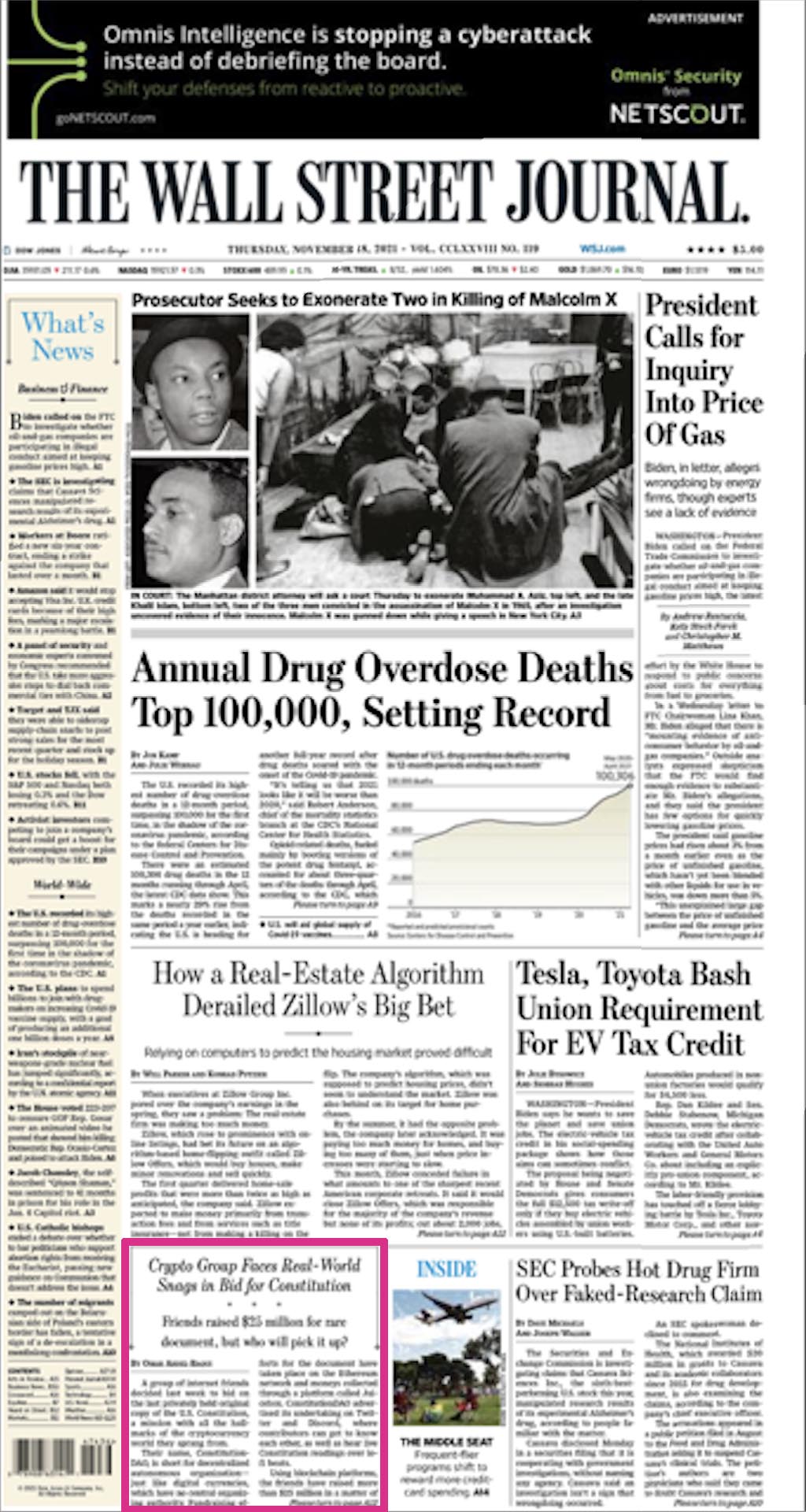
They did not win their bid (See link) but it is a tipping point. The tribal narrative of the rapture - that brave new world - goes mainstream
and the reaction, not surprisingly is one of caution... e.g. How will this work? How does this meta moment come movement translate... into the real world?
The WSJ lead with the headline: If they succeed who collects the trophy?
and this is to miss the point
There is nothing logical about the rapture
This is pure emotion
Powered by acts of faith
and yes, it speaks to the fundamentals of advertising and marketing
It speaks to the paradox of Logic vs Emotion

Conversations about the reality, the logistics, the legality, the technicality, the morality, the sanity are fundamentally redundant
They have been trumped by the sheer adrenaline rush of the overwhelming emotion tied to the moment
We are dealing with a belief system
A fundametally new way of seeing, of thinking, of doing, of being, of belonging
We are dealing with the madness of the emergent crowd
i.e. I do it because they do it
So the deeper question becomes not one of what is happening? But why is this happening?
In 'The Power of Myth' Bill Moyes observes 'Society has provided [our children] no rituals by which they become members'
I would argue the games our children play (be they social media (these games of girls/the Society of Spectacle) or video games for boys (e.g. Grand Theft Auto) have become a substitute for these rights of passage
By any measure digital has disrupted community (see Facebook, Faithbook or Trustbook?
This is why the Metaverse is so important
If you own the Metaverse you'll own the rights of passage into the society of the future
and I would suggest, if you start to deconstruct the vibrant, excitable and mostly illogical tribal narratives around DAOs, NFTs, Crypto, Metaverses, Singularities and yes, even Vacination Passports, with reference to this underlying premise, you will begin to understand the magnitude of the game in play and how the players are moving their pieces of the puzzle into position in a bid to stake their claim on the future
Metaverse is emerging as the new rights of passage
as to what form this MetaRapture will take... well I'll leave that discussion for another day
For now it's enough to follow the money... because that (not surprisingly) will teach you how the game is being played
Part 11: The spoils of war
Today ConstitutionDAO announced it was closing down
"ConstitutionDAO was able to raise $48.9 million from over 17,000 people to buy the Constitution. However, it lost the bid to hedge fund billionaire Kenneth Griffin."
If you click through the link you'll discover that unwinding the DAO and redistributing the funds back to the donors will prove to be far more challenging than creating a crypto vehicle to pool the funds for the high profile auction bid
Early indicators are the value of the tokens investor have bought may be a fraction of the original buy price and it appears smaller investors may "discover the cost of fees may be worth more than their contribution at the current transaction costs of the Ethereum network."
Primarily - and dare I suggest ironically? - because 'voting rights' were concentrated in very few hands
The MetaCryptoVerse is seemingly nothing if not a game of 'pay to play'
Which is to say the technology is fundamentally morally and legally neutral. It is how you wield it that makes all the difference
But it is a measure of how far we have come, what our collective expectations of the technology appear to be... and ultimately how far we have yet to travel to make this dream a reality
... and to help you understand the challenge a little better I have prepared a simple diagram to illustrate the fundamental shift in the behaviour of the network that proponents of the MetaCryptoVerse are seeking to achieve

As you can see the blockchain is not an attempt to solve the real problem - ie the zero cost of replication across the network
Indeed the blockchain is the epitome of this growing trend to infinitely replicate all things digital
Nor is it an attempt to solve the problem of digital dementia - ie the network loses its memory (links, websites, images can disappear forever)
It is simply yet another iteration on that age old database sales pitch... for the first time (but at a price) you will be able to store and extract (Think: (re)discover) a single version of the truth
This of course is the antithesis of the reality of data stored in a database
The reality, for data stored in a database, is meaning is irrelevant. It is a constructed on demand
You could say it is the epitome factual relativism. The doctrine that there are no absolute truths, i.e., that truth is always relative to some particular frame of reference (ie the question)
The result - this single version of the truth extracted from potentially infinite variations of the truth - is both a function of the parameters of the request and the data stored in the repository
It is an arbitary construct created on demand. Ultimately limited by the resources at hand and the scope of the thinking behind the request
Distributing (or more accurately replicating the data) merely achieves what digital does best (ie zero cost replication) but at a price
The only question we need to ask is it a price worth paying?
Arguable the unwinding of the ContitutionalDOA crowdfunding exercise suggests not
Part 12: What is a MetaCryptoVerse?
The MetaVerse is Meta (Self-Referential) + Verse (rhyme)
Or, put another way, a rhythm
Crypto is secret
Put it all together and we end up with...
A secret rhythm
i.e. a secret time
Suggesting the business of the metacryptoverse is the mining or harvesting of the collective secret time(s)
the MetaRapture is the rites of passage or induction into sharing the experience of this collective secret time
This (ironically) changes everything
It also takes us back a decade to an old post from the ExCapite Blog about the 'Emergence of the Time Wallet'
The ExCapite blog (circa 2009-2014) was an exploration of how our digital tools, these smartphones, are reshaping our ideas about Time, Space & Memory
The core idea was simply this:
The mobile phone was best understood as something akin to having a “Time Wallet” in your pocket or handbag.
By allowing you to communicate, with other people on the move, this device had fundamentally modified our relationship with time, space and memory.
Let me explain...
Look back over the past 200 years and you can see how the telegraph (and its later iterations, the telephone, fax, email, SMS, Whatsapp, Skype, Zoom) solved the problem of distance.
You didn't need to be in the same room with somebody to have a conversation
The IT computing industry disrupted paper by solving the stored memory problem more efficiently than books, bookshelves and libraries or photos, artworks and art galleries or ledgers and banks.
Converge telecommunications and computers and the problem you are solving is the distance between memories
You achieve this by creating networks of memories
However… and this is key…
Your ability to dominate, never mind manage or control, these networks is inversely proportional to the size of these networks.
As these networks grow they become more and more complex and difficult to monitor, manage and maintain.
Combine all these networks into an internet and the problem grows exponentially.
So the real challenge you and your competition face is the potential size of these combined networks is infinite.
You cannot manage the infinite so to survive and thrive you need to go looking for the finite variables in the equation that you can control, and
the only part of the Networked Economy that is finite is TIME.
Now to make things difficult, you need to understand, the Network is operating, and will continue to operate in the foreseeable future, in parallel with at least four distinct concepts time.
There is…
Kronos which we all know to be the beginning middle and end,
The Cyclical Time of the clock, the calendar, the seasons and the years.
Kairos. That moment of Opportunity and Synchronicity when you time the market, and
Then there is Chaos.
The winners of the Agricultural Revolution monitored and managed their world by Kronos.
The winners of the Industrial Revolution monitored and managed their world by Cyclical Time.
The winners of the Information Revolution will dominate the market with their ability to monitor and manage the Kairos moment. (Think: How TikTok’s algorithm works compared to Facebook’s Social Graph, Google’s Search Engine and Amazon’s recommendation engine)
So will the winners in the distant future dominate by monitoring and managing Chaos?
Who knows and to be honest it’s not our problem, at least not yet.
For now just accept that different parts of the network will interoperate using different perceptions of time and these perceptions of time are the true measure of just how difficult the digital transformation journey ahead will be for those operating within these constraints of how time is managed… e.g.
Operating on Kronos time are the archaic remnants of the agricultural revolution (i.e. Government, Defence and the Legal System).
Operating on Cyclical time will be the survivors of the industrial age (i.e. Schools, Hospitals and Corporations).
Operating on Kairos time will be the early adaptors of the MobCon (i.e. Teenagers and the Tech Savvy).
Operating on Chaos time will be the natural world and those lucky, gifted few who are capable of surfing on the edge of chaos.
Now these ideas about Space, Time and Memory are not new. They can be traced back to McLuhan... e.g.
“For tribal man space was the uncontrollable mystery. For technological man it is time that occupies the same role.”
- Paul Miller Dead Simple: Marshall McLuhan and the Art of the Record
This is why McLuhan is still important to us today.
His work continues to demonstrate just how important the questions we ask ourselves and of our technology are to the world we create for ourselves.
But how does this help us understand and size the digital transformation challenge?
Is there a “proof” that can help us to determine which ideas are going to be the long-term winner?
I suspect there is and I also suspect it can be discovered by employing a very simple question.
We need to ask ourselves how is this investment in change (be it cultural, technological, behavioural or whatever) is going to change the way we think about and interact with time.
and we can express this question as a Boston Box…
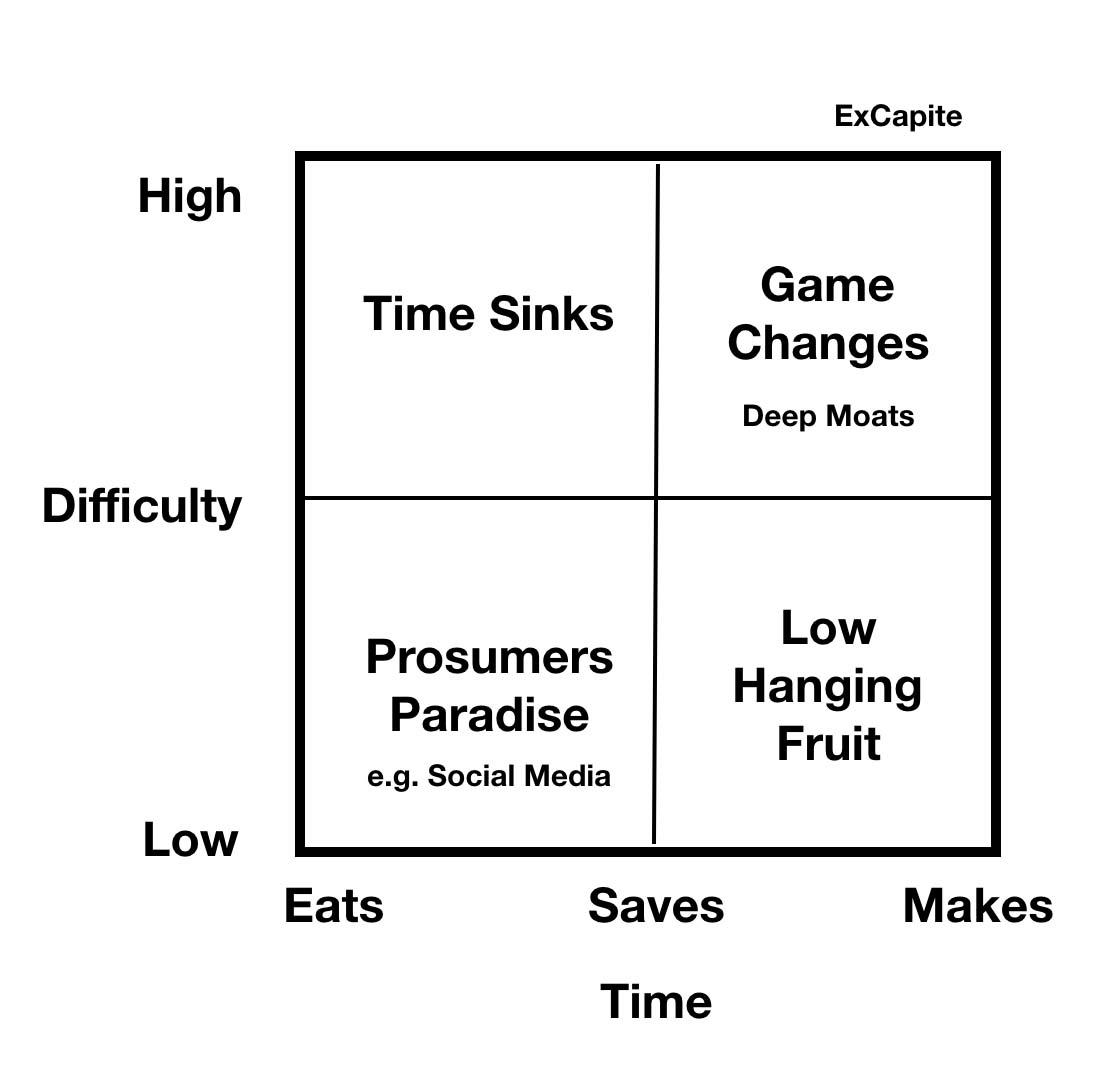
Clearly, the answer to the question is...
if it helps us to create time and it is difficult to replicate then it is a winner. A game changer.
If it helps us to save time then it is just delivering on the industry benchmark.
If it is going to eat time then we need to figure out how we can get our customers to do the work (i.e. waste their time, rather than ours) otherwise it becomes just another cost to the organisation
This then is the golden rule of digital transformation… it isn’t about digital technology… it’s all about transforming you, and your customer’s, relationship with time
Different cultures have different perspectives of time
As rule of thumb one could say the Western Tradition views time as Linear - the Beginning, middle and end
Meanwhile the Eastern tradition is cyclical - just like the seasons time returns to itself while moving forward... a spiraling circle
Here in Australia, for the Aboriginal people, time is multidimensional and can be described: 'as a pond you can swim through – up, down, around'.
This remote, indigineous, tribal concept of time is perhaps a pointer to where the road to the Metaverse is taking us
But for now the trend is very much a mashup of a heavy dose of Future Fetish mixed into the commodification of the perpetual moment
For those who specialise in living in the perpetual moment there is no 10,000 hours to mastery
Indeed, within the context of a life lived in the perpetual moment, it could be argued all masters are fools [because they have a flawed, outdated concept of time (if not space, but especially memory)
They are busy playing the wrong game
The new game is about changing the moment
Distrupting time, space and memory by constantly changing our perception of time, space and memory
and with this insight the heart of the disruptive narrative of the MetaCryptoVerse (This Perpetual Future Fetish) is laid bare
We are destined to live in the perpetual moment where the universe changes before our eyes and ears... only to discover one day, when the Googles accidentally fall off, we are thrashing around in a stagnant pool
Part 13: Scarcity in abundance
Click on this link and you’ll discover the story of a Harvard undergraduate who developed a software program to improve his chances of hooking up with girls
Within weeks he was receiving national media coverage and the rest as they say is history

Now you are thinking it’s the Mark Zuckerberg Story
But, in this case, you would be wrong
This story precedes the origins of the Facebook by four decades
It is an extract from Dan Slater’s Love in the technology era
"in the fall of 1965… two rival companies at Harvard, both student-run, were making money hand over fist by using computers to help students find dates
By the fall of '65, six months after the launch, some 90,000 Operation Match questionnaires had been received, amounting to $270,000 in gross profits, or nearly $2 million in today's dollars"
The lesson here is Technology is iterative.
Each new wave tends to replicate the past.
What we think of as disruptive, new innovation is in reality little more than a fading 60’s wet dream expertly repackaged as ground hog day
The 60’s version reflected the computing paradigm of its day
75 questions about you and 75 questions about your dream partner
The text based answers were converted into punch cards and the result was converted into a list of prospective matches… the rest, as they say was up to you
It was pattern matching. In reality the value of the questions became more and more redundant.
As we all know from experience. 3 is optimal. 7 is usually enough
The results were neither spectacularly good or bad.
Probably because the model was the antithesis of Henry Ford’s ideas about innovation
"If I asked my customers what they wanted it would have been a faster horse and cart"
Operation Match delivered what it said on the box. A faster way to find a match (From the limited pool)
It successfully packed up the delusion of the database for the masses
ie. behold look within and you find what you are seeking - a single version of the truth
and yes it was one of the first of many iterations on this eternal theme
Today we have the blockchain. And we also have the Metaverse
You could say truth has a new reality
If you read Dan Slater’s book you stumble across a quote at the end
"In the West we inflate the value of sex by restricting supply. The illusion of scarcity…"
Tim Wu - Master Switch
Putting aside the observation in love and tech history repeats
This I think is the key insight
The magician's trick is “Create the illusion of scarcity to inflate the value of _____ by restricting supply”
Bitcoin is an expression of this rule
Create the illusion of scarcity to inflate the value of Bitcoin by restricting supply
But beyond this I think we could say in the context of social media and now the Metaverse
Technology creates the illusion of scarcity to inflate the value of trust by restricting supply
and this statement seems at odds in a world of tech enabled media ubiquity and connective abundance
But in reality this idea of technology creating the illusion of scarcity to inflate the value of trust by restricting supply is at the very heart of the Blockchain narrative
Examine the language employed to define the methodologies
Proof of Work
Proof of Stake
Proof of History
Proof of Time and Space
Dare I say we are heading towards a future of Proof of Proof(s)?

and here lies the key to decoding the illusion
What is scarce is proof
What is valuable is proof
[Therefore] Technology creates the illusion of scarcity to inflate the value of proof by restricting supply
Now we can distil this idea of ‘Proof of the truth’ to being the signal in all the noise
and we then rediscover some old ideas about the convergence of Media, Telecoms and Information Technology
Today big tech is in the business of creating the illusion of scarcity to inflate the value of the signal
But not by restricting supply. But by inflating the level of noise
ie. Blockchain - and by extension the MetaCryptoVerse - is the answer to a problem of technology's own making
This then is the MetaCryptoVerse narrative decoded
It's about creating a market for Liquid Proofs

Part 14: Thoughts on a game of thrones played out in a house of cards
... and now a throwback to some thoughts originally published in the Summer 2014

The theme of this latest dash is, if you haven't worked it out by now, progress. The nature of progress. How do we measure progress? How do we know if we are making the right progress? Are we progressing in the right direction? Indeed, are we progressing at all?
For example. Take the new Yellow Pages (Think: Google). The old was a list, as is the new. But each in their own way a very different type of list. Gaming the old Yellow Pages was a question of size. Biggest Ad won. But everybody who wanted to be, or could at least afford to be, was on the list. When it came to finding a plumber you were in with a chance. However small. With the new list only the fittest survive. Digital Darwinism expressed as a list. Not everybody makes the list and if you are not on the list you are not in with a chance. The game of lists has changed. As has the art and science of gaming the list. We have progressed but somehow to a less equitable place.
And to challenge this paradigm new lists emerge. Seemingly the unscaled heights of this new era of innovation revolves around the question is the new White (Think: Facebook) the new Yellow? The dynamics of the list stay the same. It's just that the plumber has a choice of lists to expend his promotional dollar. We have moved from the battle of the "book of lists" to the battle of the "list engines". The database for... whatever it is you are looking for in life.
This then is the sum of our progress. And yes it has come at a price. We have, as they say, been disrupted.
All of which provides the context of this post. Bitcoin as a measure of our ideas about progress.
We'll begin with a bit contextual analysis. The piece in question? Marc Andreessen's NY Times Op Ed - Why Bitcoin Matters.
This chart maps the frequency of 40 keywords repeated throughout the text. Words commonly used in Banking and Finance are in blue. The red indicates the language preferences of the technologist.
The question at hand? Are we talking about a new way of banking, a new technology or simply a case of eloquent product placement?

What do you think? Other than the simple observation that frequency also matters. Promotion is nothing if not a matter of repeating messages.
For the record the split across the Top 40 Words is 51%/49% in favour of Banking and Finance. Across the Top 10 however the split is 63%/37% in favour of the Technologist. Marginally lower if you dispute the word "Value" as attributable purely to the Technologist.
Remove the product promotion of the text and we discover the split is 67%/33% in favour of Banking and Finance.
Food for thought... if only in understanding the construction of the narrative.
Now, rather than deconstruct the whole text in detail, I am going to point you towards two other pieces sources Glenn Fleishman's On the Matter of Why Bitcoin Matters and QUENTIN HARDY's Bitcoin and the Fictions of Money.
Meanwhile I'll continue to explore Bitcoin as a measure of our ideas about progress by virtue of a simple experiment. Admitted lazy. But entertaining nonetheless. A bit of word substitution in the original text.
Let's see what happens when the word Bitcoin becomes the word TRUST and the words Internet and Network become Community. The user, now a member. Distributed now simply shared. Programmers are Psychologists and products and solutions become behaviours and habits. When technology becomes meaning. The ledger our relationship.
Just what happens when we substitute our ideas about technology and replace them with some of our ideas about relationships?
The opening stanza...
"Why Trust Matters
A mysterious new meaning emerges, seemingly out of nowhere, but actually the result of two decades of intense research and development by nearly anonymous researchers.
Political idealists project visions of liberation and revolution onto it; establishment elites heap contempt and scorn on it.
On the other hand, psychologists – nerds – are transfixed by it. They see within it enormous potential and spend their nights and weekends tinkering with it.
Eventually mainstream products, companies and industries emerge to commercialize it; its effects become profound; and later, many people wonder why its powerful promise wasn’t more obvious from the start.
What meaning am I talking about? Personal psychology in 1975, the Community in 1993, and – I believe – Trust in 2014
One can hardly accuse Trust of being an uncovered topic, yet the gulf between what the press and many regular people believe Trust is, and what a growing critical mass of psychologists believe Trust is, remains enormous. In this post, I will explain why Trust has so many Silicon Valley psychologists and entrepreneurs all lathered up, and what I think Trust’s future potential is."
Do you see the picture that is emerging? Let's try another section.
"How does this work?
Trust is a community wide shared relationship....The Trusted relationship is a new kind of payment system. Anyone in the world can pay anyone else in the world any amount of value of Trust by simply transferring ownership of the corresponding slot in the relationship. Put value in, transfer it, the recipient gets value out, no authorization required, and in many cases, no fees.
That last part is enormously important. Trust is the first community wide payment system where transactions either happen with no fees or very low fees (down to fractions of pennies)."
and, how about this one?
"What’s the future of Trust?
Trust is a classic community effect, a positive feedback loop. The more people who use Trust, the more valuable Trust is for everyone who uses it, and the higher the incentive for the next member to start using the meaning. Trust shares this community effect property with the telephone system, the web, and popular Community services like eBay and Facebook.
In fact, Trust is a four-sided community effect. There are four constituencies that participate in expanding the value of Trust as a consequence of their own self-interested participation. Those constituencies are (1) consumers who pay with Trust, (2) merchants who accept Trust, (3) “lawmakers” who run the courts that process and validate all the transactions and enable the distributed trust community to exist, and (4) psychologists and entrepreneurs who are building new behaviours and habits with and on top of Trust.
For this reason alone, new challengers to Trust face a hard uphill battle. If something is to displace Trust now, it will have to have sizable improvements and it will have to happen quickly. Otherwise, this community effect will carry Trust to dominance.
Moreover, Trust generally can be a powerful force to bring a much larger number of people around the world into the modern economic system."
And, let's finish up with this
"I hope that I have given you a sense of the enormous promise of Trust. Far from a mere libertarian fairy tale or a simple Silicon Valley exercise in hype, Trust offers a sweeping vista of opportunity to reimagine how the financial system can and should work in the community era, and a catalyst to reshape that system in ways that are more powerful for individuals and businesses alike."
Which is all very nice but in the end who needs a post or an essay or an article to bring this message home when a simple tweet would have sufficed?
"Trust me, because this changes everything."
Which is to say the text needs no further analysis or criticism. Simply because it is, in so many ways, a micro self-critic of the American condition today. Our, or should I say their, ideas about relationships and technology are interchangeable. You could call it relatology or technolation but, either way, at its heart is a love for soft innovation.
Bitcoin may, or may not, be the currency of tomorrow but it is a clear measure of our ideas about progress today.
Given the choice between hard innovation. Innovation that bleeds. Innovation that cuts the future with an edge. Innovation that breaks through. Setting fire to all our platforms and life boats. We much prefer our innovation soft and cuddly. Low impact and full of promise, of good things for all who are willing to share, tomorrow, with us.
So tell me how do you feel about that and why is it we can't we all be friends?
For it is the "Summer of Love" remixed through this abundance of technolation. Less Beatles, More Bits n' Lists. Sustained by our addiction to these ubiquitous slabs of glass.
Tell me if you think I'm wrong...
At least until next time... ;-)
Part 15: The game of your life
Ironically Andreessen’s declaration of love for all things Bitcoin sparked something of a Bitcoin winter
After his January 2014 Op-Ed Bitcoin’s price fell by roughly 4/5ths
It didn’t spark to life until a new game came to town. Ransomware
and then we doubled down on ICO’s and the rest, as they say, is history
Which was nice because I was getting worried about that 5 year price forecast I published back in 2014
But we’ll save that story for another day…
A few weeks ago Zoe Scaman - Founder of the Bodacious Agency - released an excellent trends deck
It’s called the New Fandom Formula and how it’s about to change everything
It’s a follow up to her substack piece The Future Of Fandoms - A rapidly emerging cultural and commercial currency
In it she posits that fandom will become the dominant cultural and commercial currency
and she has deduced a new formula to express this idea
Fandoms = Community x Autonomy x Equity
She also asks the obvious question: What would a future of Brands as Fandoms look like?
Dig deeper and you’ll discover a new wave of Algorithmic Tribes engaged in an Endless Tokenized Remix
Basically the declaration is: Move over Mobile Apps here comes the dApps. Yes, we are moving from viral to tribal. From you being the product to you being the investment
And I guess we need to ask the question: Does this change everything?
Arguably no.
We are still talking about a life lived on the list
We are just in another phase of repackaging - rebranding - what life lived on the list will look like
What’s the game? What are the rewards? What’s the hook? Who is playing and why do they feel need to belong?
Think like this and the equation is reduced to
Fandoms = Who is playing? x What’s the game x What’s their reward?
or,
Fandoms = Algorithmic Tribes of Interest x Sharing an Endless Creative Remix x NFTs
While the old sharing economy equation was
Social Media = Networks of Interest (Think: Influencers & Followers) x Sharing an Endless Creative Remix (Think: List) x Likes
and it boils down to a simple question
If you change the reward from Likes to NFTs
It changes the story but does it change the game?
Because, if it does, change the story and the game, then this changes everything... at least for those of us who want to keep playing the game
To answer that question let’s turn our attention to an Op-Ed published this week in the Atlantic by Index VC Rex Woodbury
The article in question is What Happens When You’re the Investment [how] Social capital is becoming economic capital.
In it he tells the story of the Tokenize Self. Of how a young man has turned his future into a social token. Of how he shares himself with others. Or, more accurately sells himself to others
Holders of $ALEX would receive 15 percent of Masmej’s income for the next three years, capped at $100,000 overall, and would be able to exchange tokens for special privileges: 10,000 $ALEX bought a retweet from Masmej on Twitter; 20,000 $ALEX, a one-on-one conversation with him; 30,000 $ALEX, an introduction to someone in his network. In five days, Masmej raised $20,092, enough to send him across the Atlantic to San Francisco to launch his start-up.
As part of this fun experiment token-holders could vote on his life decisions
Is it the next wave of NFTs? No it’s an FT. Basically a personalised ICO
You could describe it as the financialization off the self… but in reality our time has always been subject to financialization. ie. Most of us trade time for wages and we exchange this money for experiences (Food, shelter, entertainment)
At the heart of the OpEd is the argument
The rules around how we create and capture economic value are being rewritten, opening up new roads to the kind of wealth creation previously limited to a select few.
The personal ICO, or should that be Initial Person Offering (IPO) or Initial Personal Futures Offering (IPFO), takes us back to that discussion about Trust and Territory and how it becomes a game of accumulating territory
Understand this and it becomes much easier to imagine a future of financial markets becoming Index Funds of personal ICOs
Which, when you think about it, isn't so much a vision of the future for the American Dream but a vision of the future past of the American Dream
and this raises the question why would a young person of sound mind to choose to commit to an experiment of Tokenized quasi-indentured future?
Why would they choose to embrace a future as a 'Liquid Proof'
and what does that tell us about the game they are choosing to play and more importantly the game they are choosing not to play?
Because, when you think about it, we are talking about the game of their lives
Today the Metaverse, this Web3, is the new cultural phenomenon
It’s officially the new brand positioning statement for emergents and incumbents
Facebook is now Meta. Square has added extra dimension and become Block.
And Adidas has expanded its foray into the Metaverse with a Four-Way Collaboration with Bored Ape Yacht Club, Pixel Vault’s Punks Comic and crypto investor Gmoney
Today it is important to be seen as, if not disruptive, then at the very least, fashionably Meta
Around the globe CMOs are asking the question: How do we Meta to an emerging generation of consumers who Meta?
Today we all come together and sing the Crowdsong of the Metaverse
Welcome to the new frontier of creativity.
Together we are building a place where everyone can express their most original ideas and be their most authentic selves, in what ever form it takes.
And - thanks to the wonders of the blockchain - everyone who contributes to building this new society can own a piece of what they create
It's a grand vision
A Game of Proofs dressed up as the Summer of Love. A place we can all [chain] dance in sync to a techno beat
But the label - this Blockchain - comes with a warning: Be careful what Metaverse you wish for... you may just find yourself living there
The brand appeal of the Metaverse is easy to see
With Television Brands sponsored rituals like the SuperBowl, Eurovision and the World Cup
With the Metaverse Brands will once again have the opportunity to sponsor rituals
This is why Fandoms are front of mind
Fans, Rituals, Sponsorship... what's not to like?
This is why Advertising and Marketing will warmly embrace this opportunity to go back to the future
It's Proof by Association
But here's the thing... It isn't about Brands sponsoring Rituals
It's about Brands sponsoring Communities... Tribes of interest
Strip away the hype and you discover it's Ning 2.0
Part 16: Igniting the imagination
One of the most popular posts on the old excapite blog was SnapChat, Instagram, Pinterest, Angry Birds and the myth of the Viral App
I wrote it 8 years ago. It went viral in venture capital circles
Essentially it used growth numbers and press coverage to deconstruct Silicon Valley mythology
It explained the the innovation engine that powered Silicon Valley wasn't technology.
It was publicity
... and network effects was basically a function of the old fashioned media feedback loop
Today I want to apply them same methodology to the explosion of interest in NFTs
First the chart illustrating the key dates when these disruptive Crypto Art Projects received national and international press coverage and the direct effect this coverage had on the value of the underlying blockchain technology unit price
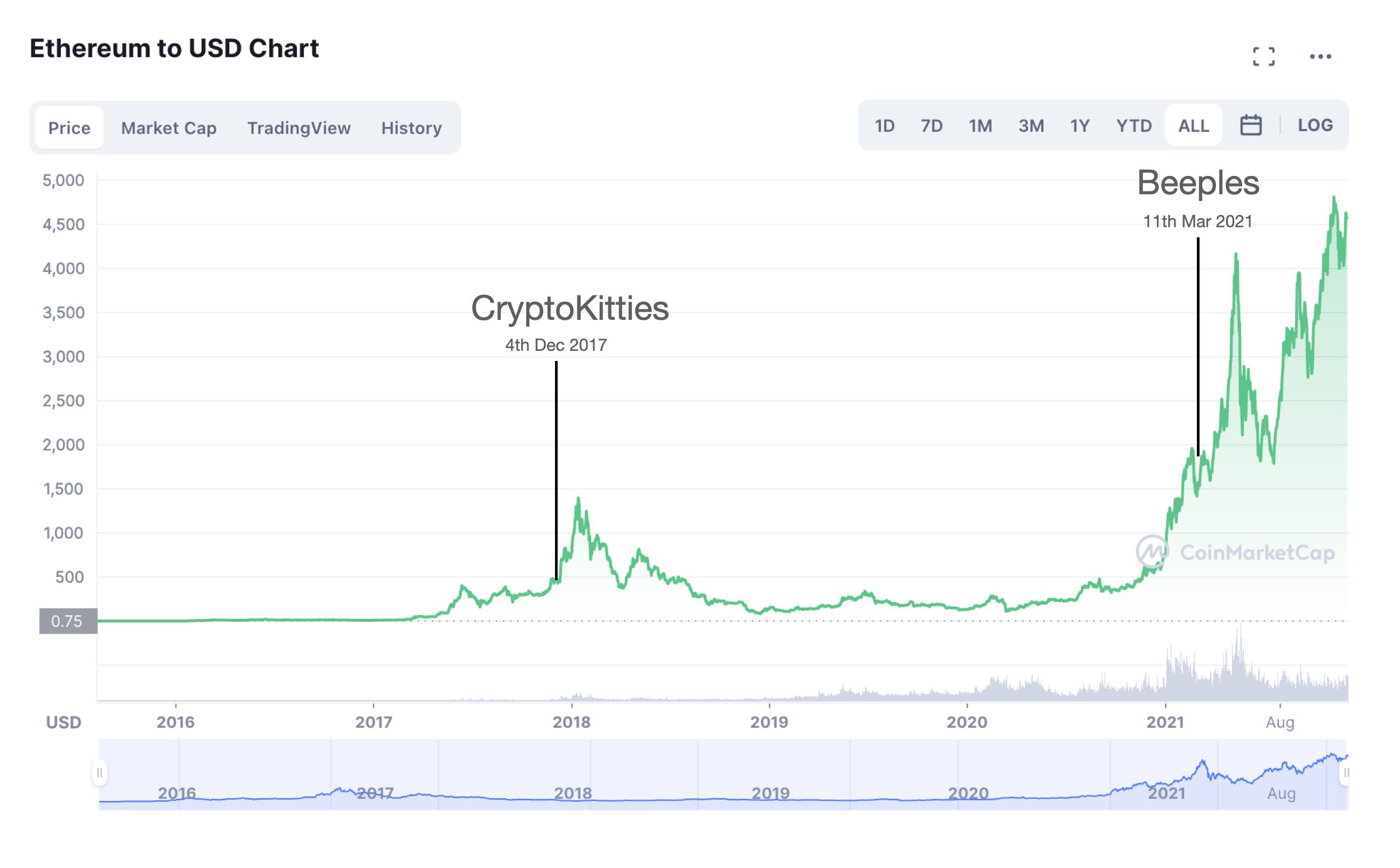
and now links to some of the headlines that fueled this explosion of interest
We'll start with the CryptoKitties
Techcrunch 4th Dec 2017 - People have spent over $1M buying virtual cats on the Ethereum Blockchain
Launched a few days ago, CryptoKitties is essentially like an digital version of Pokemon cards but based on the Ethereum blockchain. And like most viral sensations that catch on in the tech world, it’s blowing up fast.
CNBC 6th Dec 2017 - Meet CryptoKitties, the $100,000 digital beanie babies epitomizing the cryptocurrency mania
Someone spent $114,000 on a virtual kitten that runs on blockchain
One week later we see an Academic Paper - The Leisures of Blockchains: Exploratory Analysis - published explaining
Cryptokitties are feline blockchain-based collectible units within a “game”-orientation and that can be bred (created) and traded (bought-or-sold) on an ethereum blockchain. Launched in October, 2017 by Canadian company AxiomZen, the game has garnered more than $10 million dollars worth of trades, with feline units of Cryptokitties amounting to $100,000 or more in value
and by the end of the month the New York Times had picked up the trend with CryptoKitties, Explained… Mostly
Every new technology gets a game that helps bring it careening into the mainstream. Social networks had FarmVille. Mobile phones had Angry Birds. And, its investors hope, blockchain has CryptoKitties.
Now let's take a look at what happen to NFTs in 2021
The NFT wave was ignited on the 11th of March 2021 when every major news outlet reported on the $69 Million Beeple Auction (see The Verge, Wired, LA Times, New York Times, BBC)
The technomagic 'rags to riches' story was...
Until October, the most Mike Winkelmann — the digital artist known as Beeple — had ever sold a print for was $100.
Today, an NFT of his work sold for $69 million at Christie's. The sale positions him “among the top three most valuable living artists,” according to the auction house.
The rationale behind his sucess was (not surprisingly) the power of social media and network effects
A few factors explain why Beeple’s work has become so valuable. For one, he’s developed a large fan base, with around 2.5 million followers across social channels.
But let's put that aside for the moment because the key point I want to make is in each case it was the publication of the disruptive story by the mainstream press that ignited the price frenzy that drove the value of Ethereum up
On average these stories tripled the market cap of Ethereum

The takeaway here, yet again, is...
THEY CHANGED THE STORY and it CHANGED THE GAME
Now this insight doesn't account for the other stories powering Ethereum during these period (ie ICOs in 2017 and DeFi in 2020-21)

But it does provide you with peak into how the global game of innovation is played
and ultimately why the bid for the US Consititution was such a powerful story to relaunch the (as yet) undisruptive DAO

Looking back over this thread I hope you can see that the MetaCryptoVerse is basically the latest iteration of a 70 year history of disruptive narratives
You could say it's about as innovative as Streamlining and Go Fast Fins on the Motor Cars of the 1950's
It looks and feels exotic but in underneath the body work is an aging chassis and leaf spring suspension
But that is to miss the point. Silicon Valley is no different to Detroit. It's in the business of manufacturing user experiences
I hope you now see how the emergence of Bitcoin and the MetaCryptoVerse, speaks to the heart of the disruptive digital narrative and the past, present and future of brand building
How the challenge of selling the Blockchain is no different to selling social media, CRM or business intelligence
It comes down to a simple question: How do you turn the mundane? The updating and querying of a database into something exciting like sharing and connecting with friends?
How do you excite the programming community to build apps and solutions on your platform?
How do you excite investors into funding these software developers?
The answer is you begin by creating a new language. e.g. DeFi. Decentralized Finance
You talk disruption. You talk about disrupting old, traditional stale Banking with new and exciting and innovative decentralised finance
You talk Smart Contracts… simply because it repositions everything that has come before as Dumb Contracts (Plus it had worked before with mobile phones)
You reimagine arbitrage as Yield Farming and Liquidity Mining
You talk of snapping this next generation of APIs as Money Lego
You talk of trading contracts across decentralised exchanges
You reinvent the IPO as the ICO
You reimagine social networks and communities of interest as DAOs
Event Tickets become POAPs (Proof of Attendance Protocol)
and you repackage some old ideas that failed before (Think DRM=NFT)
You use language to reinvent the old as something bright shiny and new
More importantly you leverage language - dare I say stories? but more accurately triggers - to shift market behaviour in your favour
If we turn the clock back to 2010 we discovered - once you stripped away the rhetoric, the grand narrative - the market leaders of the Mobile Wave were building their brands by gaming market behaviour to arbitraging free
e.g. When we examined the DNA of Apple’s Innovation Engine we discovered “Today Apple has...
Developers building free software applications (Other people's time, effort and ideas)
Venture capitalists providing investment funds (Other people's money)
Media outlets providing lots of free promotion and/or content (Other People's Time, Brand and Customers)
Customers who are product champions (Other People's Time and Brand)
Market Brand Leaders building mobile apps (other people's time, effort, ideas, money, customers and brand)”
The same principle applied to Facebook’s You as a platform model where we discovered the primary channel for igniting this radical change in behaviour was VC funded PR
All the evidence pointed to a simple market proof
Change the story… and you change the game
Today Blockchain/Crypto ticks all the boxes
Today Blockchain/Crypto has...
Miners consuming large quantities of electricity to create bitcoin and other crypto tokens for free (Other people's time, money, resources, effort and ideas)
Developers building distributed applications & exchanges for free (other people's time, effort, ideas, money, customers and brand)
Venture capitalists providing investment funds (Other people's money)
Media outlets providing lots of free promotion and/or content (Other People's Time, Brand and Customers)
Investors who are product champions (Other People's Time, Money and Brand)
It’s changed the story… and now it is changing the game
Part 17: Filling in the gaps
Stephen Diehl published this brief technical appraisal of what Blockchain and Web3 brings to the table
It's nothing new. Arguably tech insiders have been saying the same thing now for over a decade
Meanwhile the Bank of International Settlements posted this warning about the emergence of DeFi in its quarterly review
Again this is nothing new. Anybody familar with the operations of the financial services industry have observed the foundations of the Decentralised Unregulated Crypto narrative is at best naive. At worst dangerous
There is the report by ChainAnalysis on the 2021 NFT Market suggests the NFT market operates along the lines of the US IPO market with 'whitelisted' investors being given the option to buy into the opportunity before the retail market
Finally a chart published back in May of this year by Messari mapping the distribution of investors in Inital Token Allocations for Public Blockchains identified the shift from Public to Private ownership of the underlying infrastructure of the emergent Web3
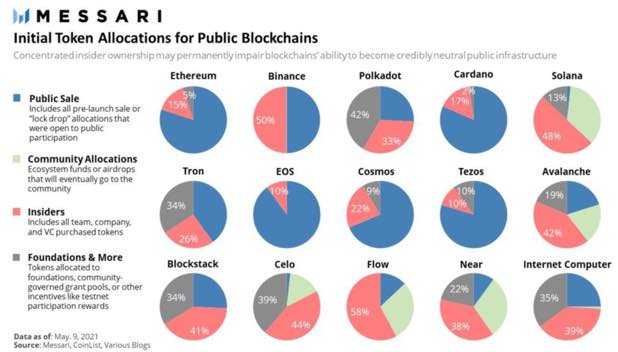
So let's put the technology aside
Let's put the hype aside
Let's put the game of 'pop goes the weasel' aside
And let's take a look at some old ways of thinking about the web and see if they deliver any new ways of thinking about Web3
We'll begin where we started this thread: The Evolution of the Web... Or, why the more things change. The more things stay the same

The key to understanding the web (as I have said before in this thread) is to think of it as a web of nodes and pointers (Web pages and Web Links)
Google emerged as a winner because it solved the search problem (ie speed/accuracy) by aggregating or, more accurately, counting the pointers

Facebook emerged as Yahoo! 2.0 by aggregating the nodes and then renting them out
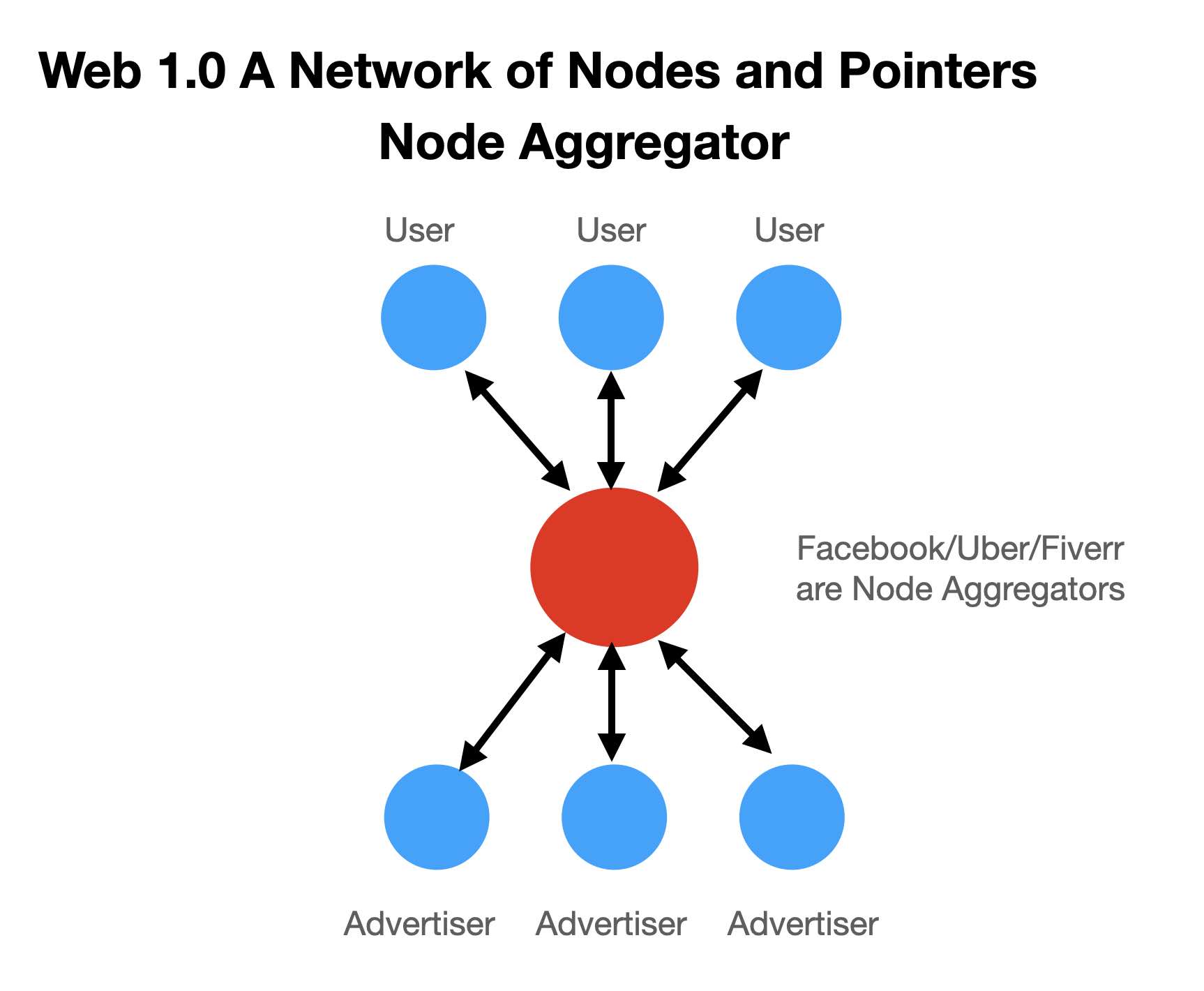
The same principle applies to Uber, Fiverr, AirBnB and the rest of the Gig Economy... they are Web 1.0 Business Models dressed up as 2.0
What made Web 2.0 different was the Nodes and Pointers evolved into Function Points and API Calls

Shopify is a classic example of a Web 2.0 business model
It's in the business of bundling 3rd Party function points into a single sign on package
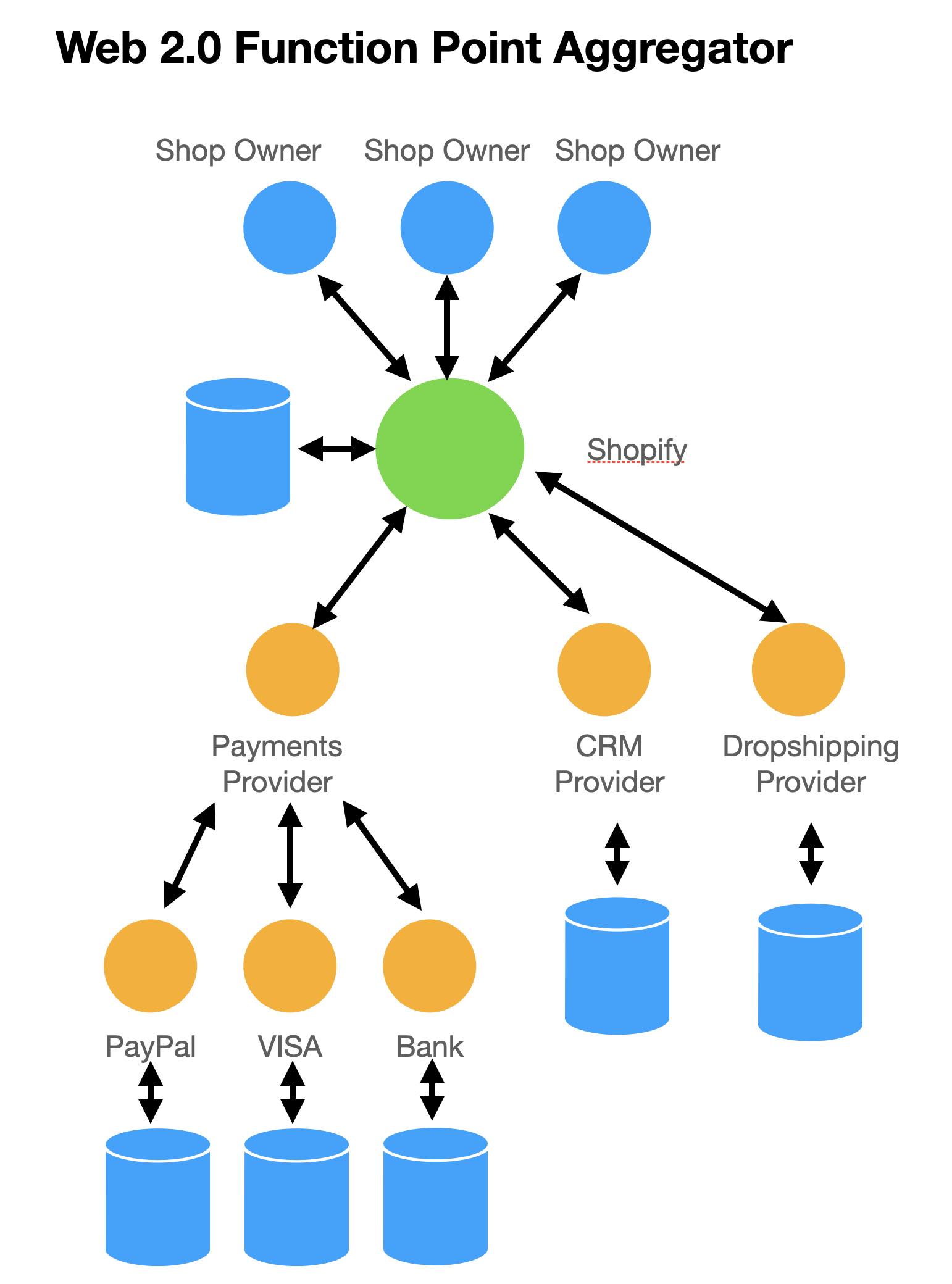
Now the Web 1.0/2.0 framework was in place by 1995
Which means Silicon Valley VCs and Global Management Consultants have been in the business of repackaging the same old, same old for over 25 years
This is why Web3 is important. The same old, same old is in desperate need of a makeover, some lipstick and a fresh coat of paint...
But this also explains why understanding the past is so important if you want to profit from the future
We can begin this journey by mapping the Web 1.0/2.0 eco-system into a matrix - the bundled and the unbundled
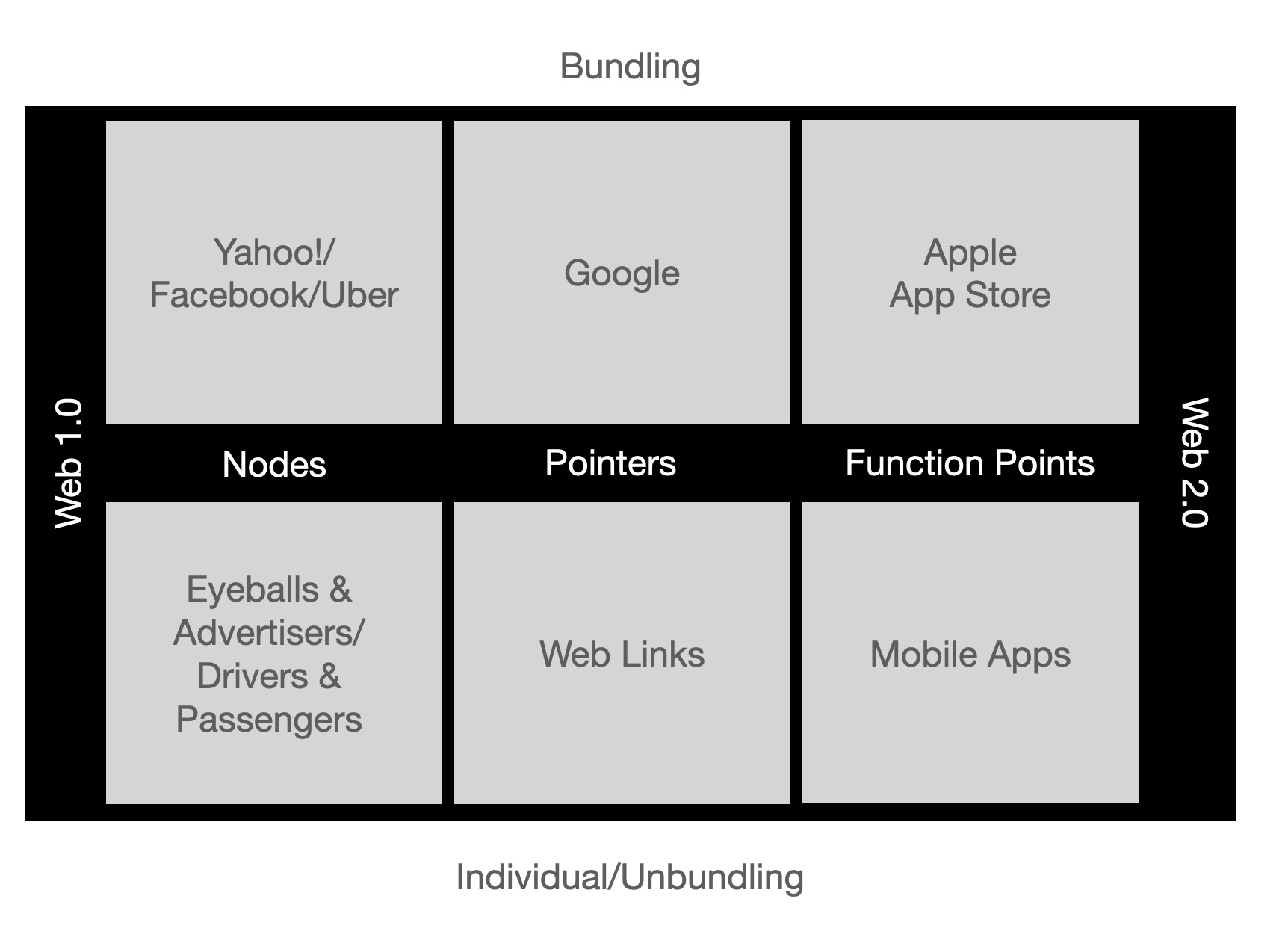
It doesn't take a rocket scientist to see the winners are in the business of bundling
Moreover the winners fall into 2 types of monetization model - Rent Seekers and Brokers

Now you will notice there is no broker alternative to Google's pointer model... until now
This is the gap in the landscape were NFTs and ICOs fit in
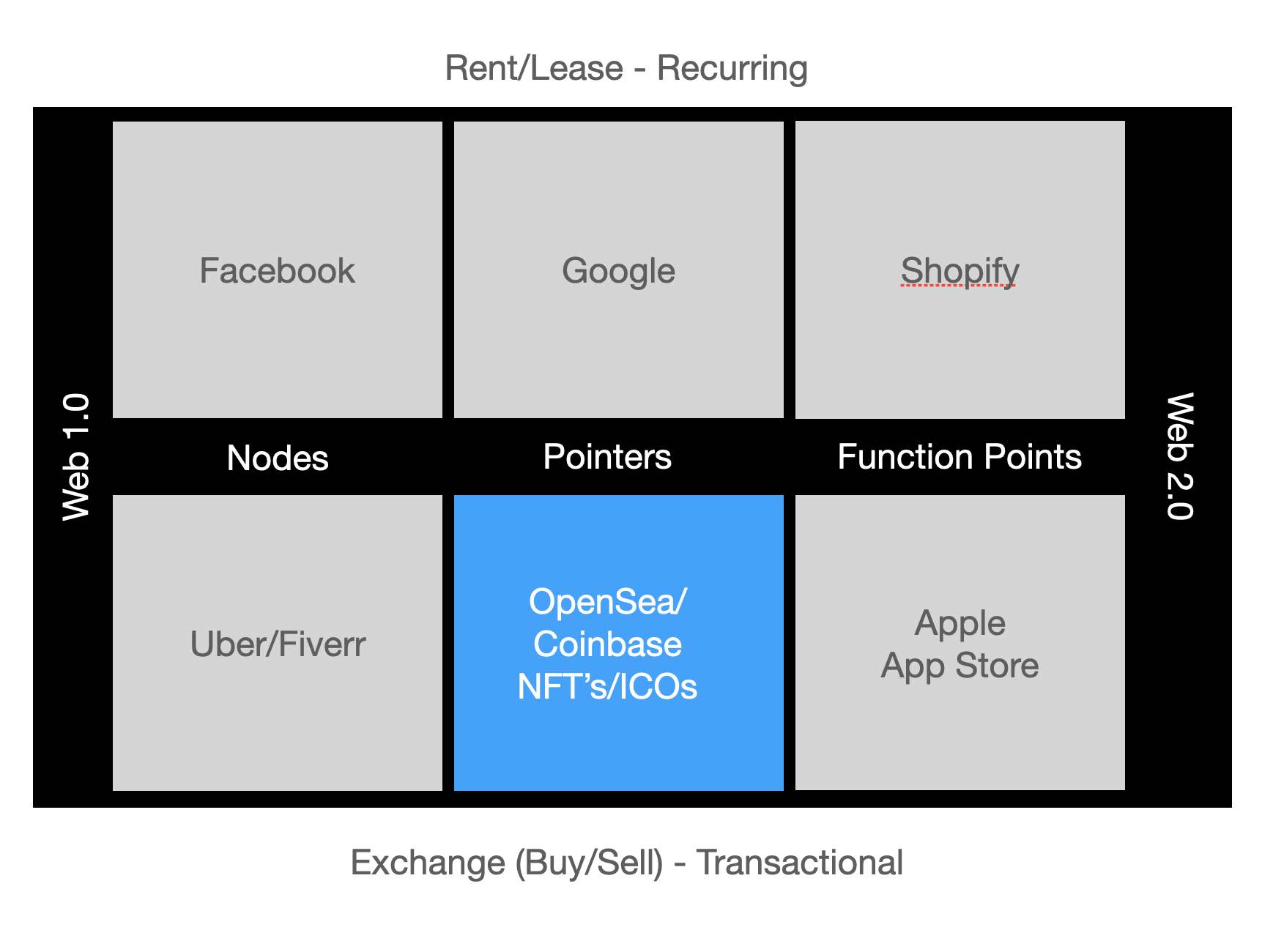
Now let's use the map to identify where the opportunities are and who or what needs to be disrupted for the MetaCryptoVerse to change everything
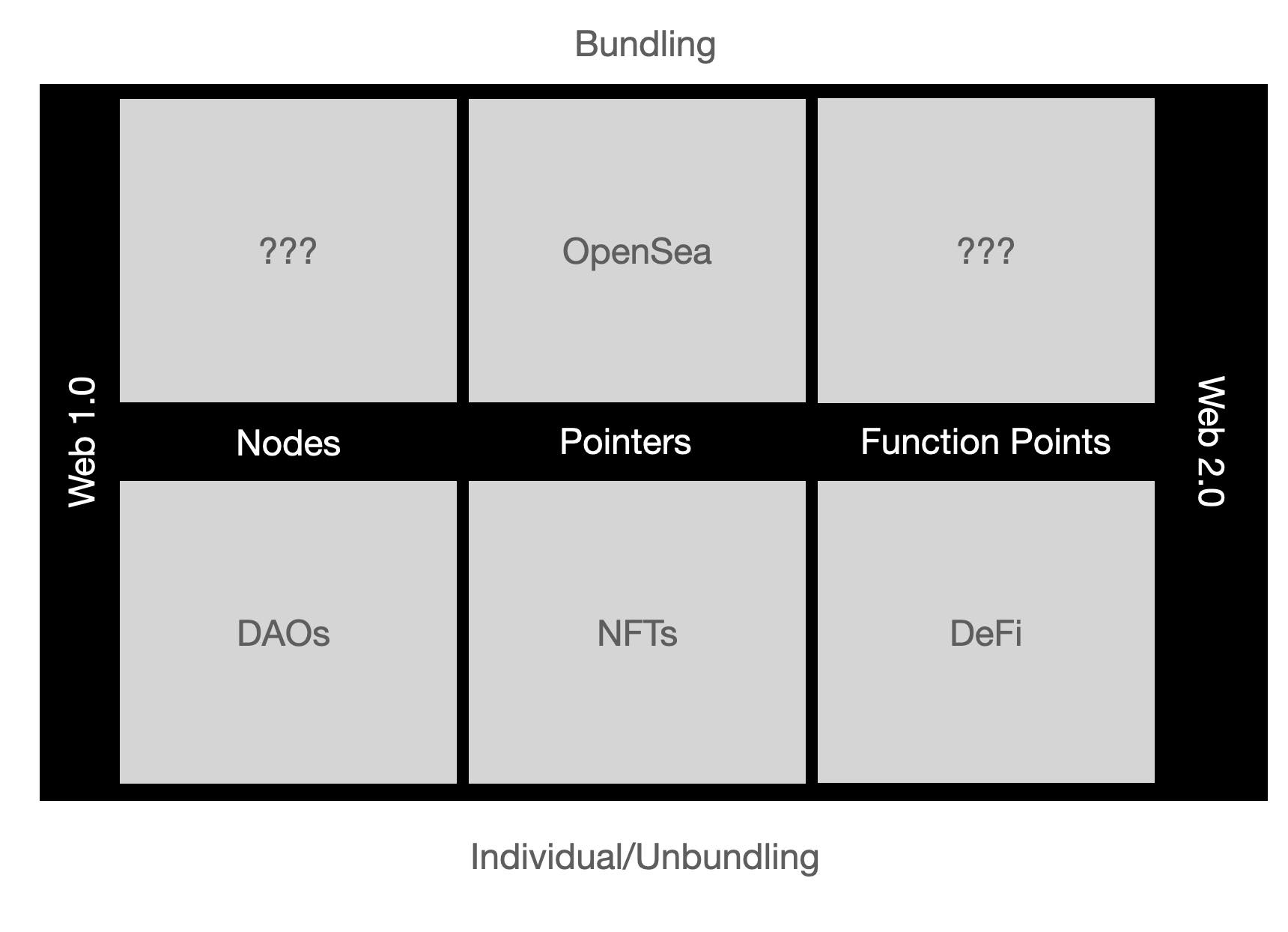
The key observation being bundling is the antithesis of the Web3 ethos but it is self evident from the history of the web that bundling is where the money will be made moving forward

Assuming, of course, the Web3 is going to be transformative and is capable of disrupting Google, Facebook, Shopify, Salesforce, Adobe, Amazon et all... (Now that's a big call)
Otherwise it looks like NFTs and ICOs are about as good as it gets
The other way of looking at it is to argue that for Web3 to be truely transformative it will - rather than disrupting the bundling incumbents - uncover ways to monetize the unbundled without bundling
... but rather than conducting yet another thought experiment I thought I'd just let A16Z $3 Billion Crypto Investment Portfolio do the talking

If we create a simple heat map of the portfolio across the Rent/Broker Bundle/Unbundle Matrix we discover...
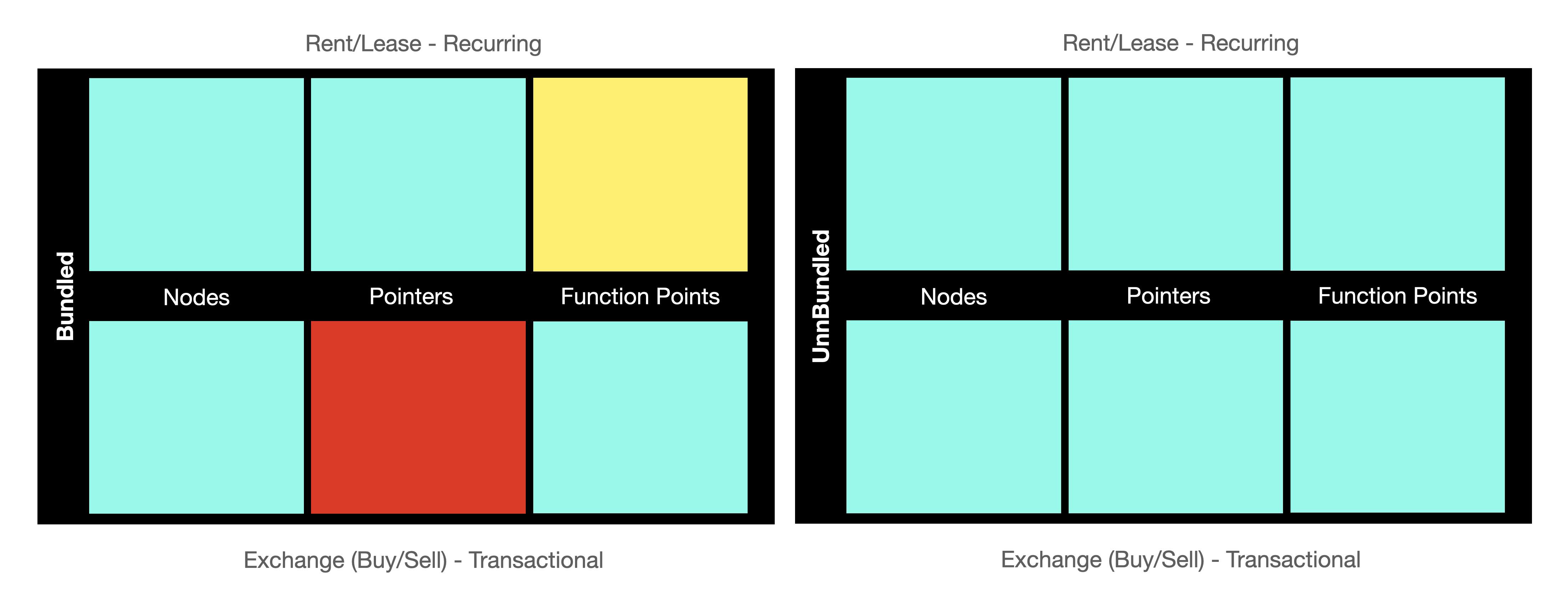
Basically they are investing in Brokerages, Wallets, Tokens, PaaS, IaaS and SaaS
ie. Centralised tools and services designed to service a decentralised world
Which is to say they are leveraging their knowledge of what worked for them in the past to predict where they think the most money can be made in the future
You could say they've changed their story... but not the game
Part 18: Less the BlockChain. More the Valuechain
It's Christams Eve 2021
The Web is alight with the news Jack Dorsey has been blocked by Marc Andreessen on Twitter over his remarks about the Web3
The block comes after Dorsey criticized the venture capital industry and made several remarks about Andreessen Horowitz in particular.
The entrepreneur said “Web3” — a potential new decentralized version of the internet based on blockchain — would be owned by rich VCs like Andreessen instead of “the people”.
“I’m officially banned from Web3,” Dorsey tweeted Wednesday alongside a screenshot showing he had been blocked by Andreessen.
What can I say? But been there and done that
This indiscretion resulted in the account being blocked not just by Andreessen but the whole A16Z social/mobile investment team
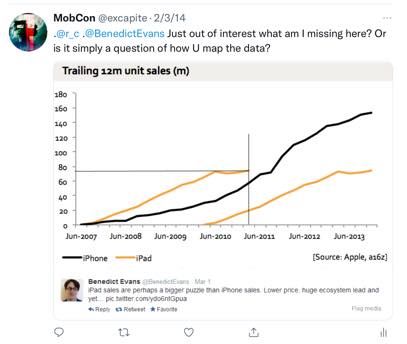
But I digress
What I find facinating isn't the 'Desperate Housewives' banter
The laboured exchange of digital handbags...
What I find facinating is the media focus on the performance piece... the laboured billionaire histrionics... rather than doing the deep dive on the value Andreessen and the team at A16Z have manufactured over the past 12-18 months with the Web3 / NFT narrative
You see, while everybody has been talking Blockchain, what they have been creating is a very exclusive and extremely rewarding Valuechain
and, to help you understand exactly what I mean by this, here is the final post of the MetacryptoVerse thread...
The final piece in this 18 part puzzle... for all of you who may have failed to read the underlying thread buried inbetween the lines
The Wealthy Tiger Guide to Understanding NFTs, Web3 and the MetaCryptoVerse
Now that's what I call, by any measure, the Art of Post Modern Innovation played out on an industrial scale...
At least until next time...
Quick Links: This changes everything | The Internet of Money | Trust and Territory | If NFT's are the answer... What's the question? | American Dreams | Of Doppler Trails and RelationBlips | American Dream 3.0 | Meta Malls | The Golden Rule | Passion without reason | The spoils of war | What is a MetaCryptoVerse? | Scarcity in abundance | A house of cards | The game of your life | Igniting the imagination | Filling in the gaps | Less the BlockChain. More a Value Chain

